September 2, 2018
Martha O'Kennon
It happened! The goldenrod finally decided to open. Now it is almost fully bloomed out, and some sections are becoming brownish-yellow. I feel I should be out there taking as many pictures as possible. The past couple of days I've gone out 3 times of about 1.5 hours each. In the heat and humidity. We just saw our first aphid colony of the year on some of the goldenrod. The fall-blooming highly fragrant white Hosta flowers are coming along beautifully. And the False Solomon's Seal berry clusters are now turning pink-red, thick, and enormous.

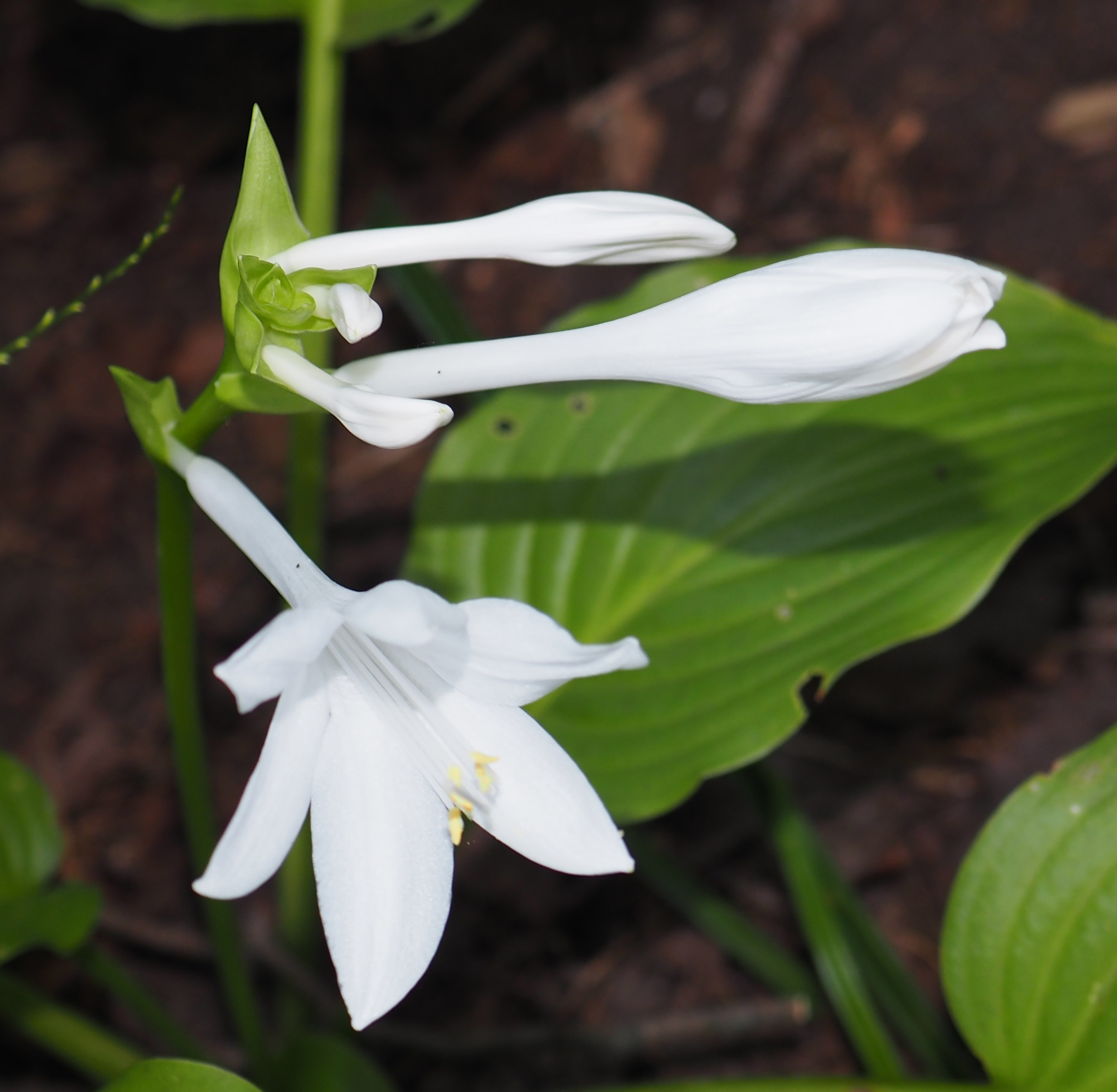

Remember that there is information in the name of the file for each image. You can see it by mousing over the image - look at the lower left of the screen. Or you can click on the image to get to the (usually) larger image. Then the info is displayed in the address line above. Sometimes the second click will actually display a different view of the original image.
False friends? Is this picture one of a winged ant, a tiny wasp, or a fly? Answer 1: It's a fly! Answer 2: I don't know. Do you? Answer 3: it seems to be an ant. I've never noticed one before with the delicate white markings around the eye and around the neck.
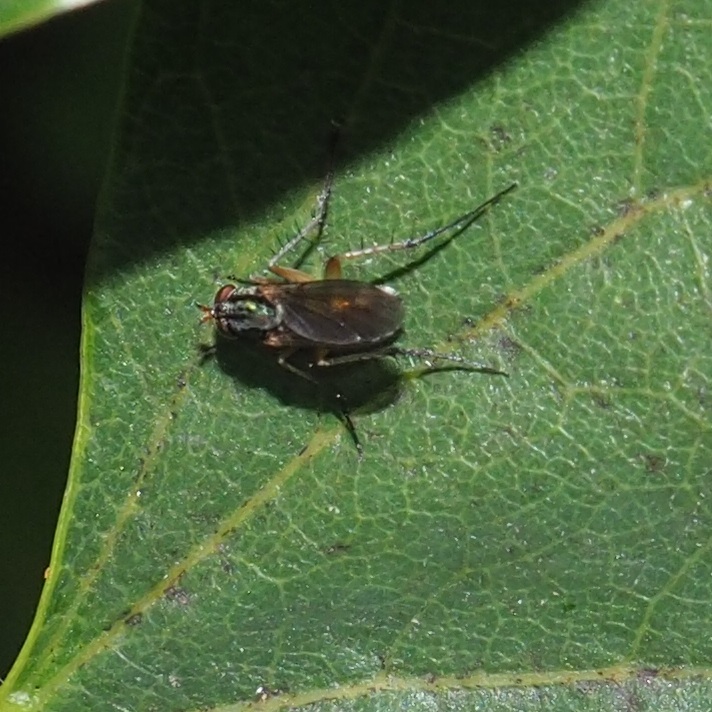
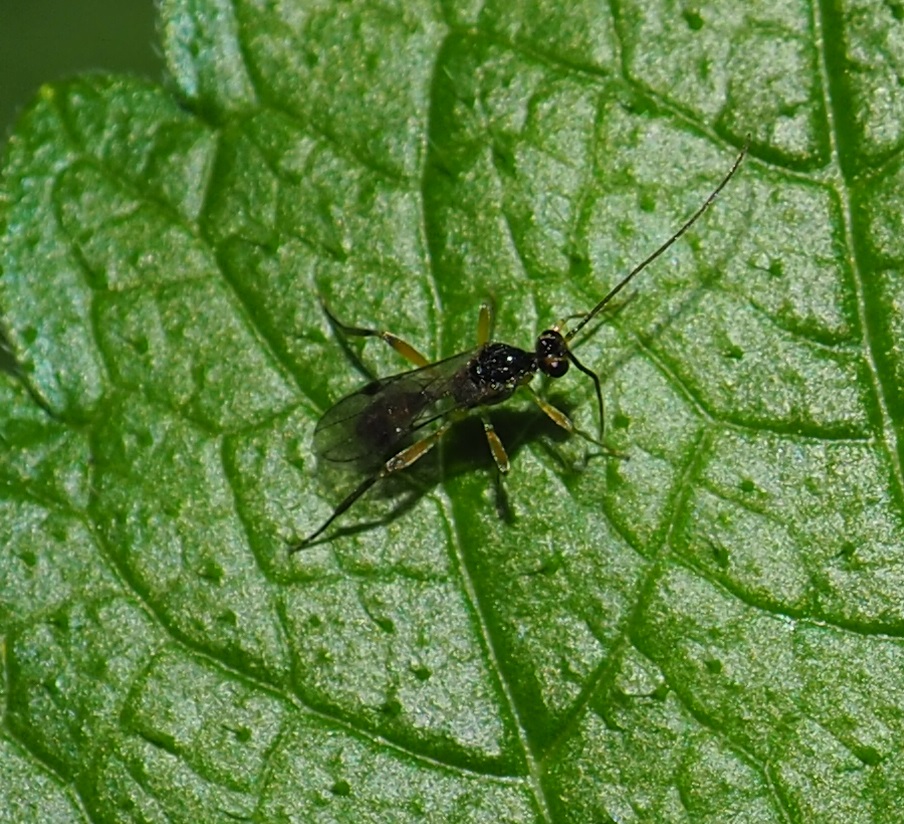
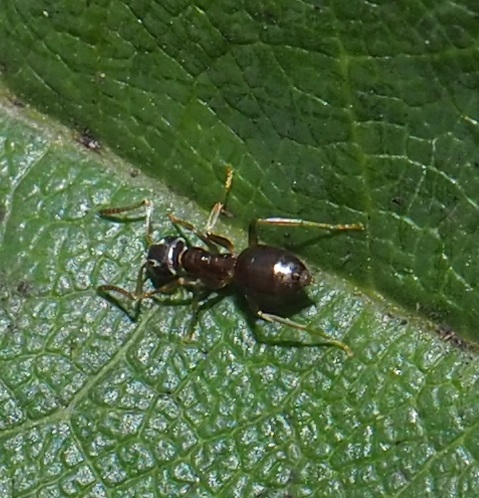
Now for the barklice. Barklouse #1 is one of our earliest barklouse friends, Metylophorus novaescotiae. Second is the hairy-winged barklouse Polypsocus corruptus. Our favorite Polypsocus cruciatus was in an odd position, but is our dear old "Tigery" Barklouse.

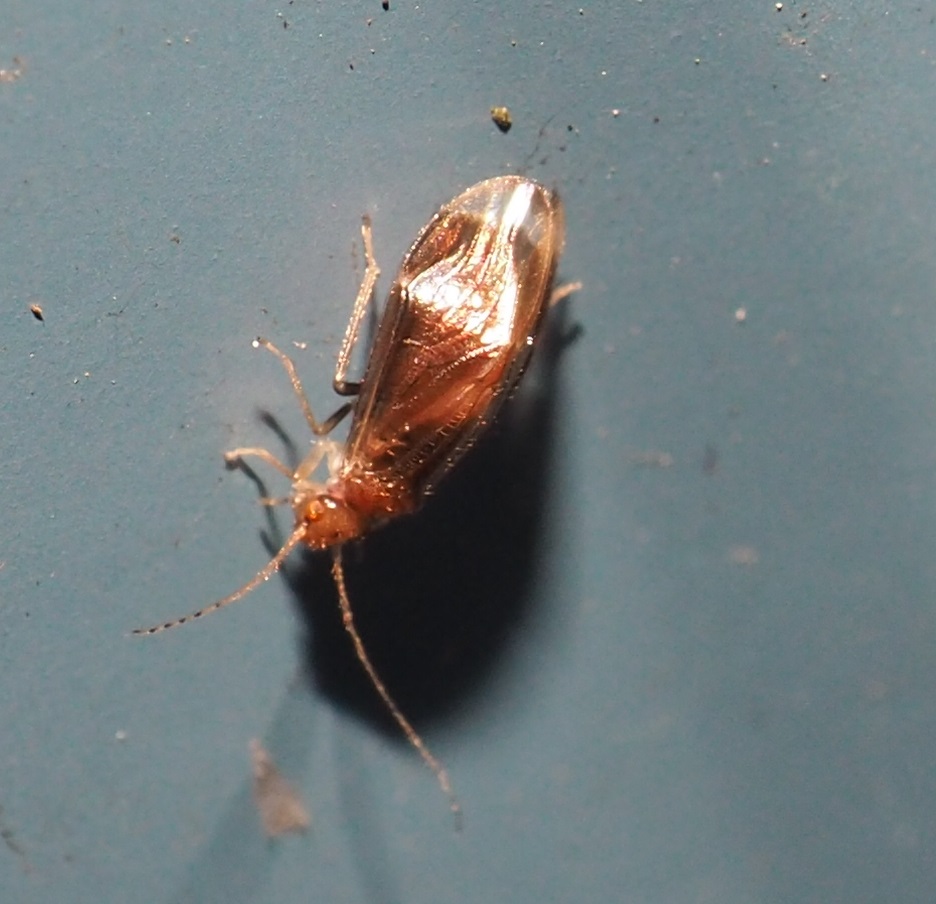

Goldenrod doesn't just mean wasps, but also bees. First here is a bumble bee, but which one? Whoever it is has some good full pollen baskets on it! Could number 2 be a member of genus Andrena? Third is a good old Honey Bee.
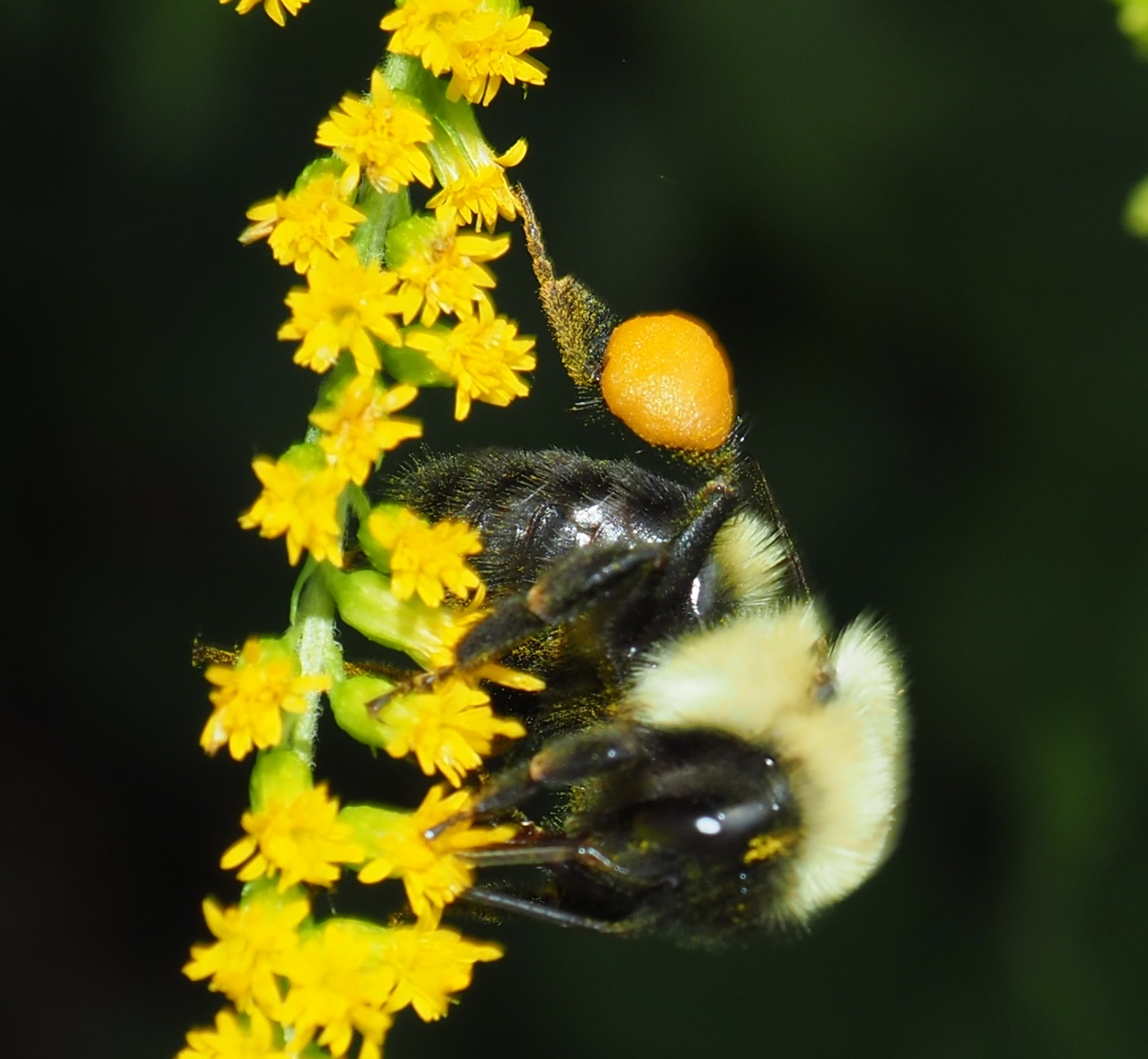
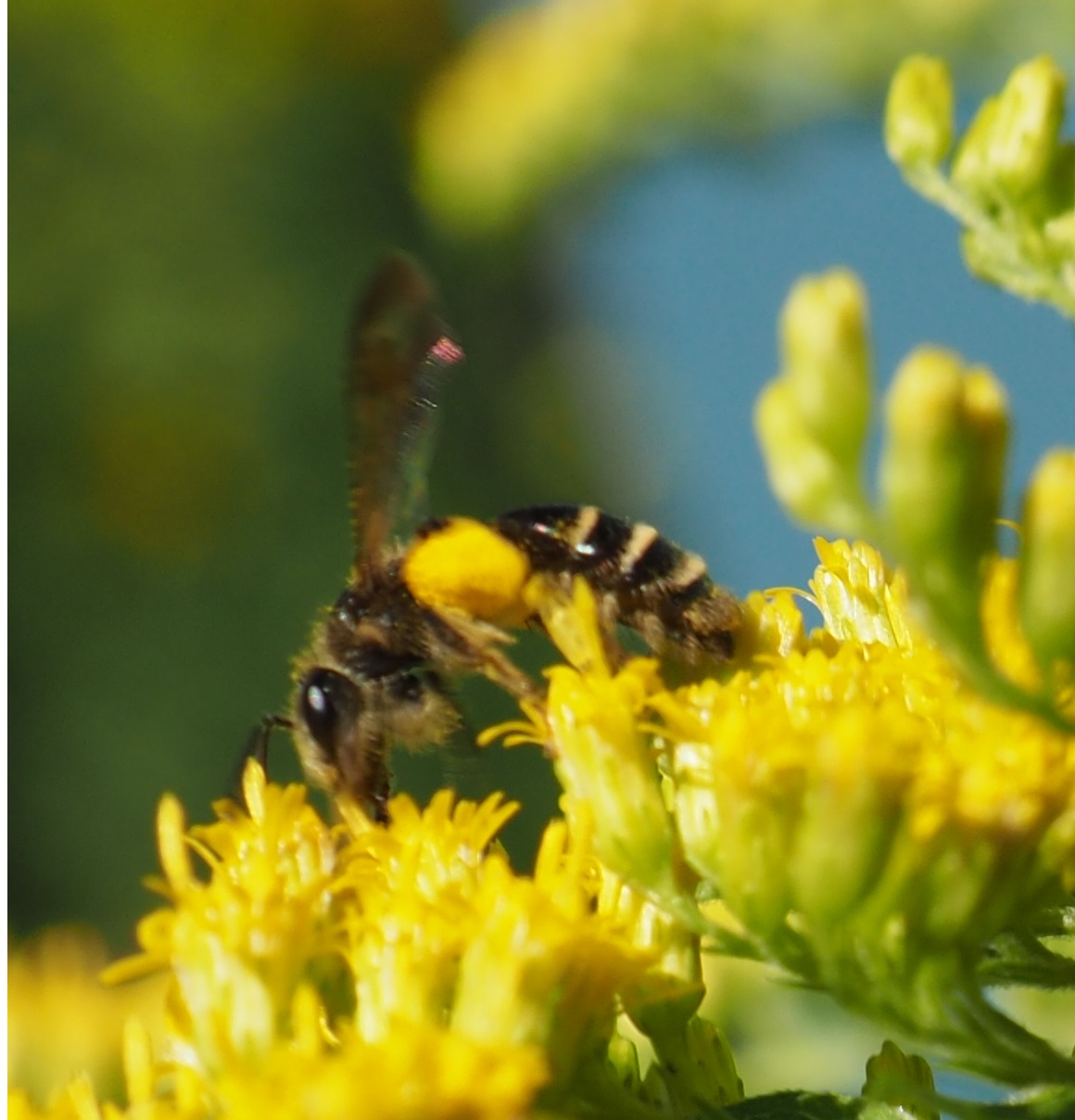
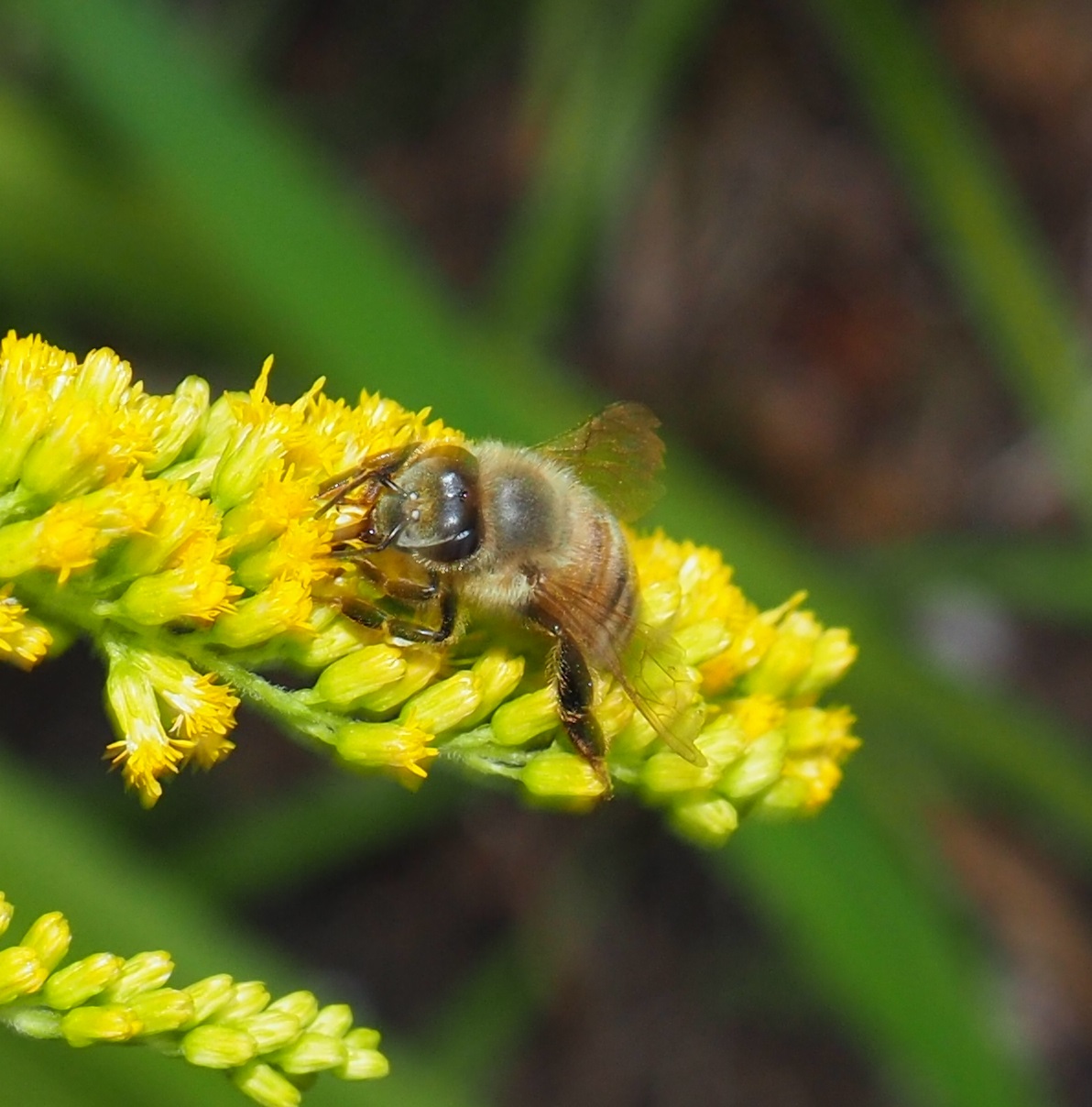
Even though during the hottest times of day this tiny bee and this teensy hover fly would probably jiggle each other away, but when it cools down a bit, you can actually get fed without getting a heartburn. Second is one of those metallic green bees. It was in the shade in the picture so I had to up the brightness level to be able to see it. Third is a bee in flight.
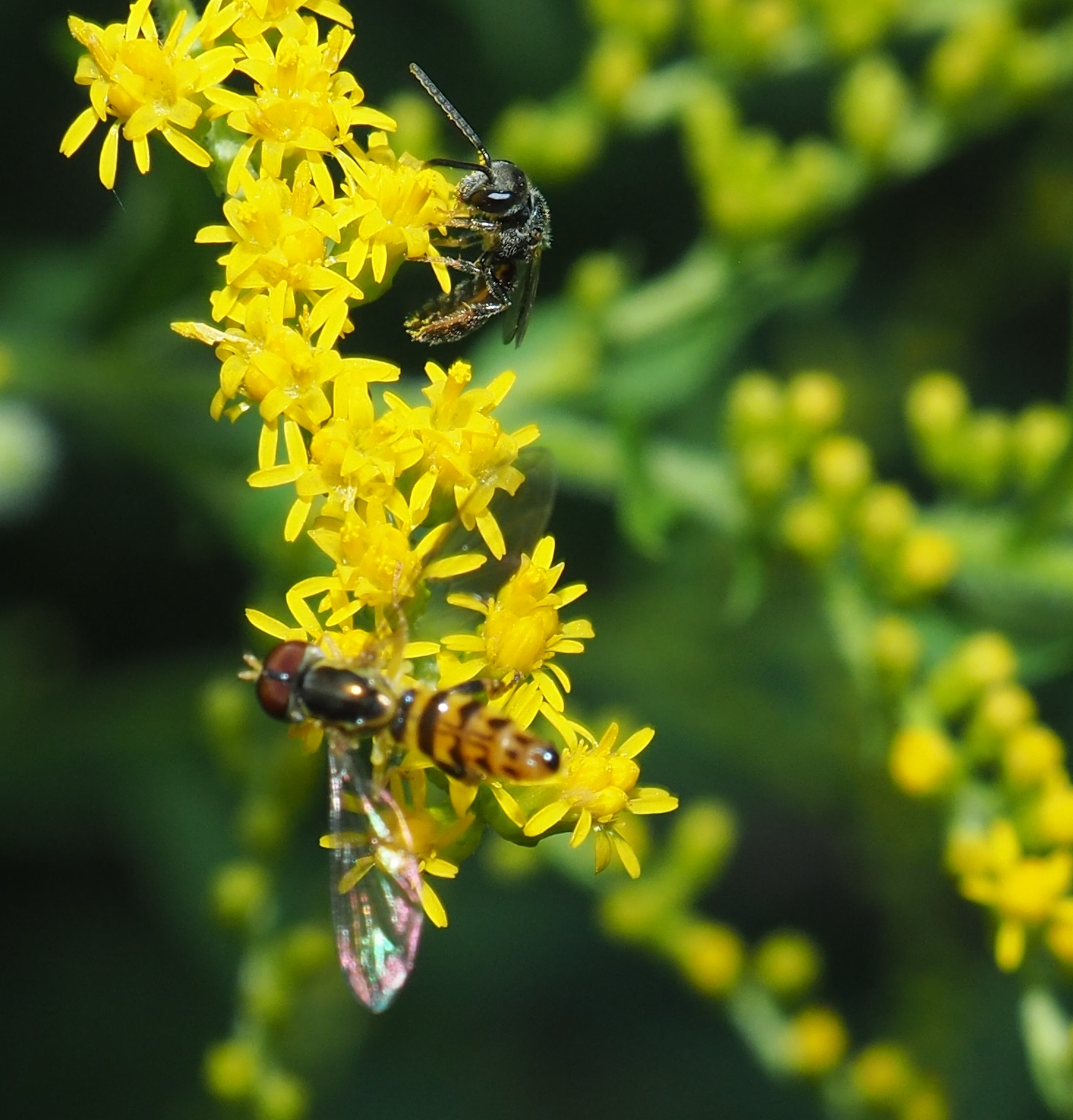
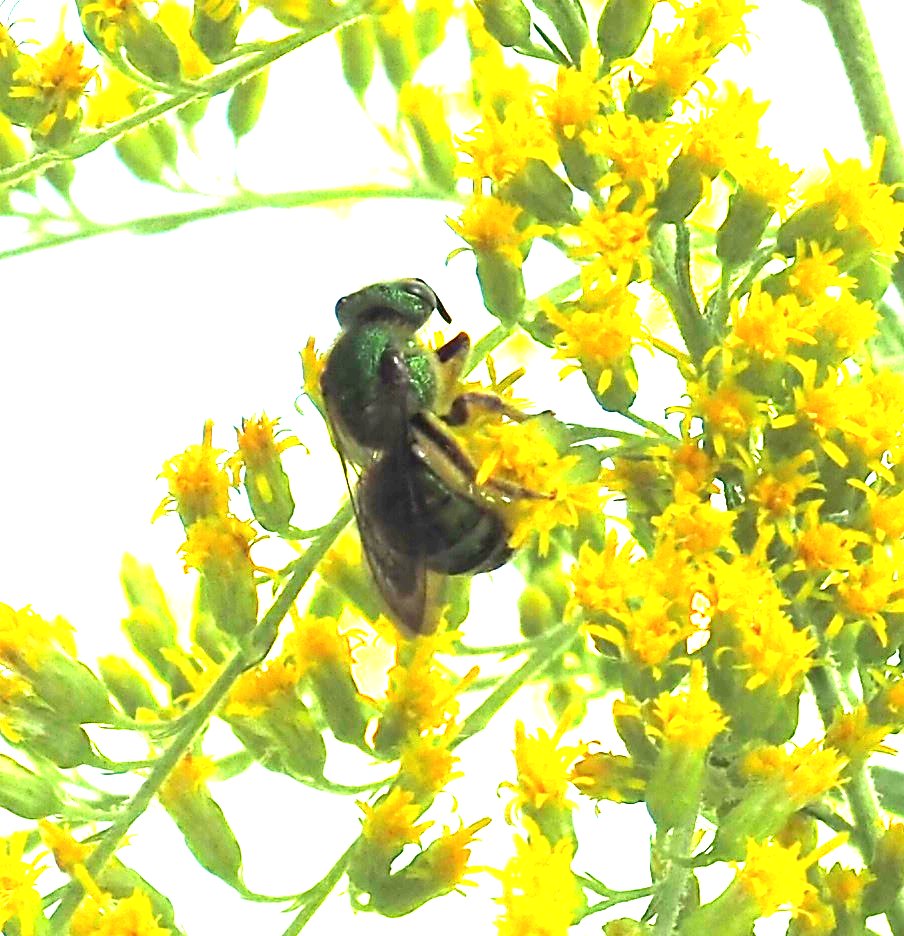

Here are some of the beetles we saw this past week. The bright red Lily Leaf Beetles almost destroyed the Tiger Lilies and now are looking for new food stops. The Goldenrod Soldier Beetle we don't see except for Pledge Week on PBS, uh I mean goldenrod season. Which doubles for Mating Season.
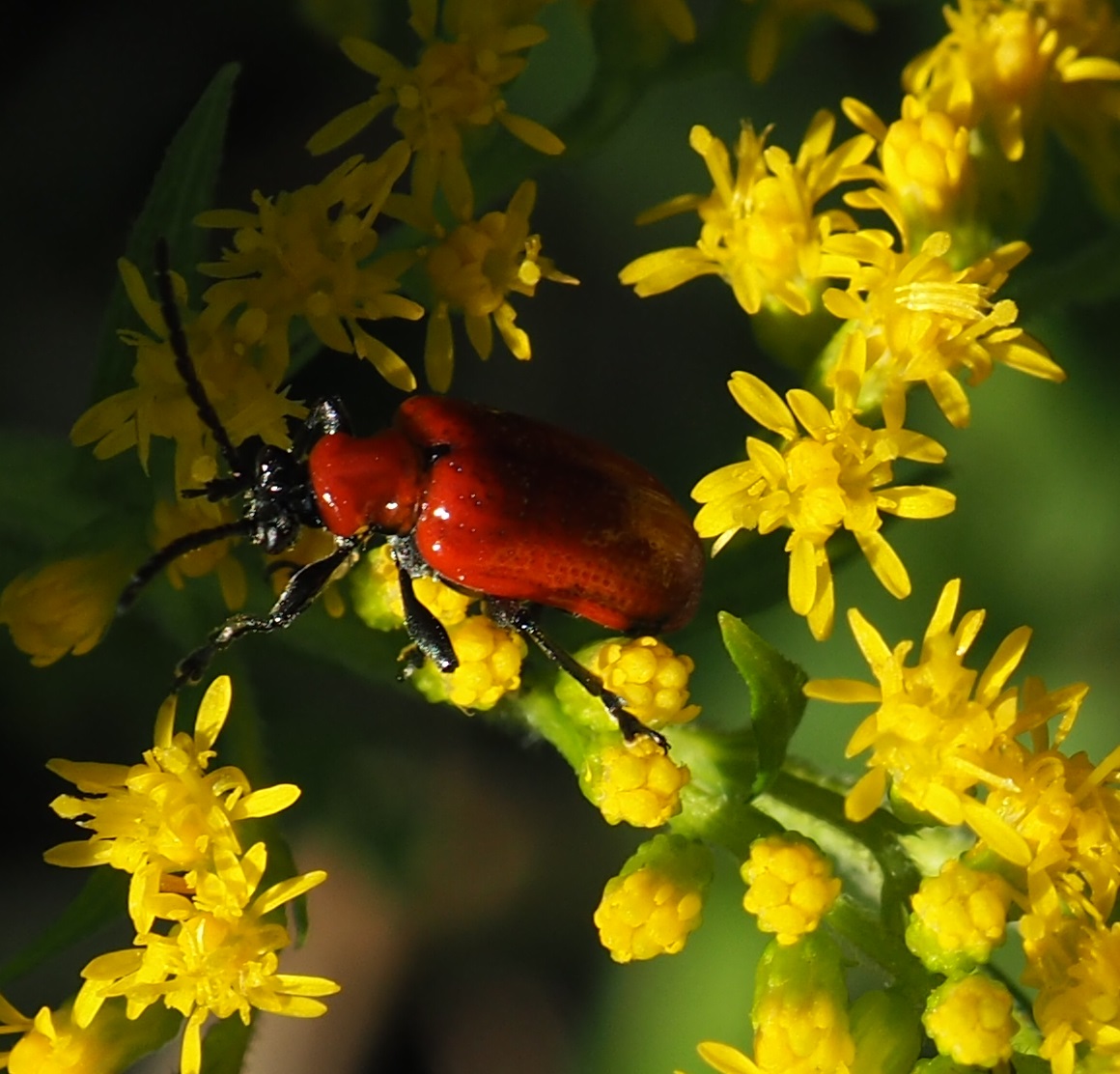
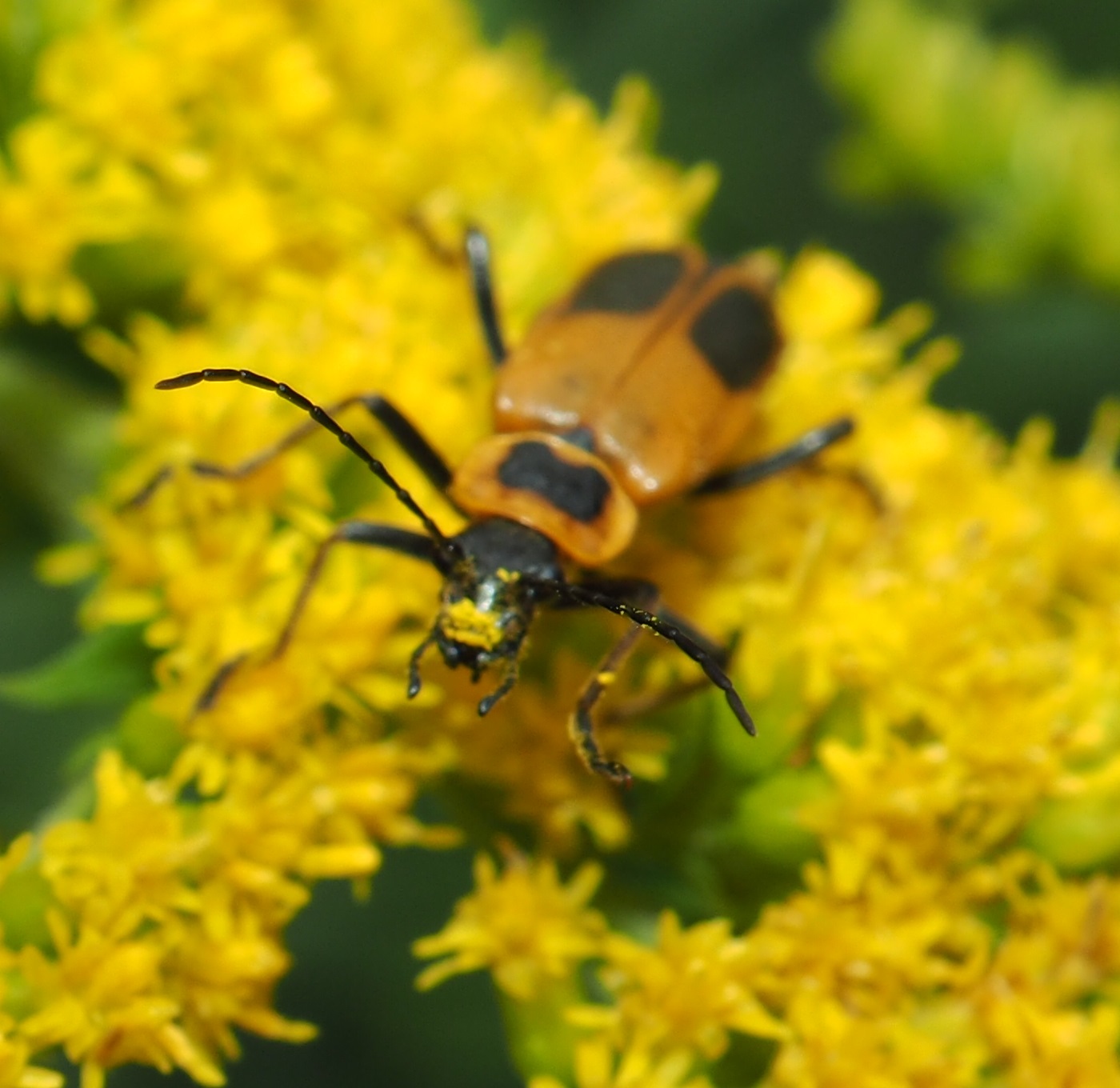
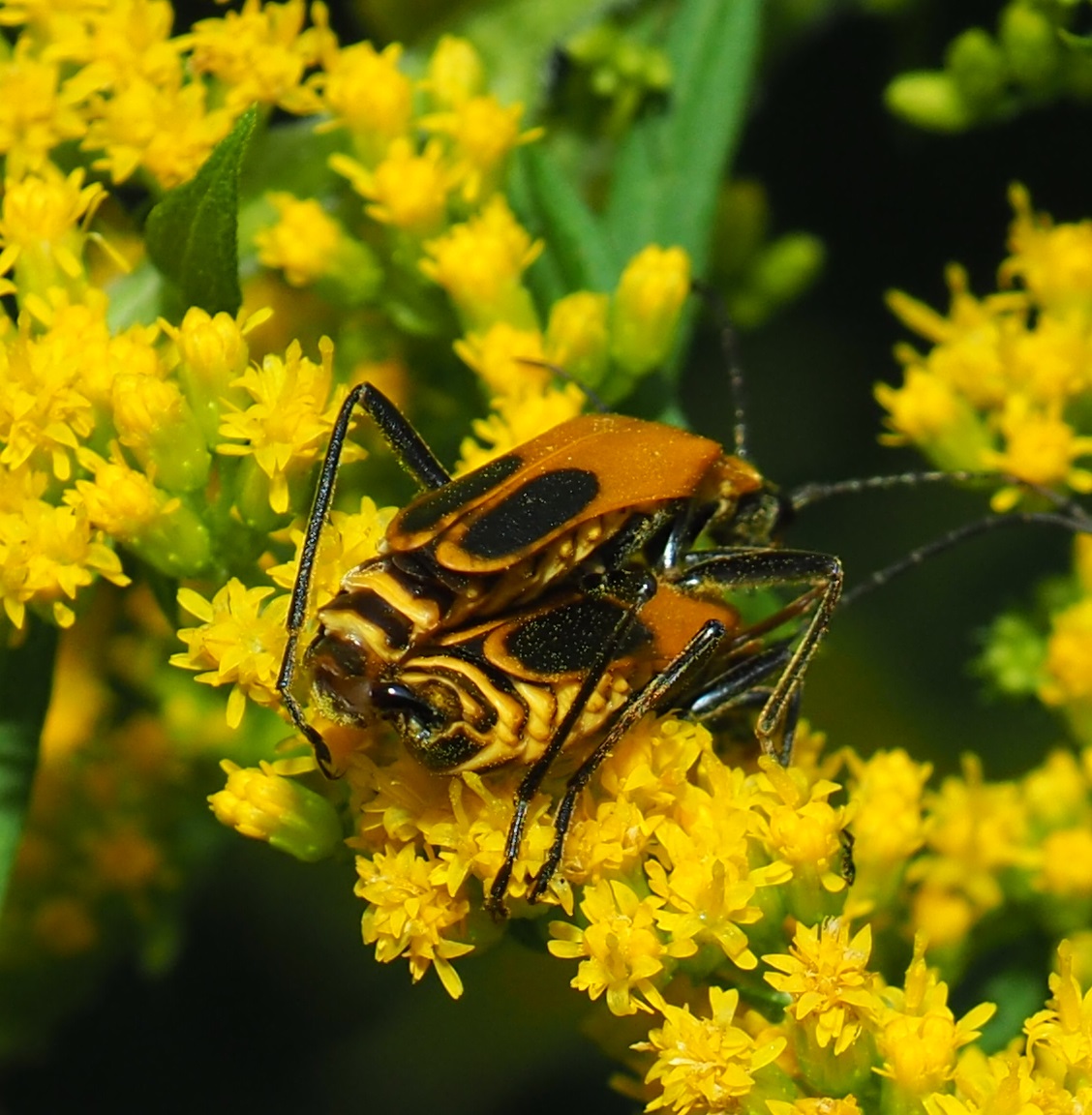
The Spotted Cucumber Beetle doesn't like to be seen in toto but you can get it in these two pieces. Third is the amazing Redbud Bruchid. You remember about them, I think, that their larvae develop inside the seed pods. I believe that's what bruchids do. Did you remember that the Red Bud is a bean? (Well, a legume anyway. They all have pods.)
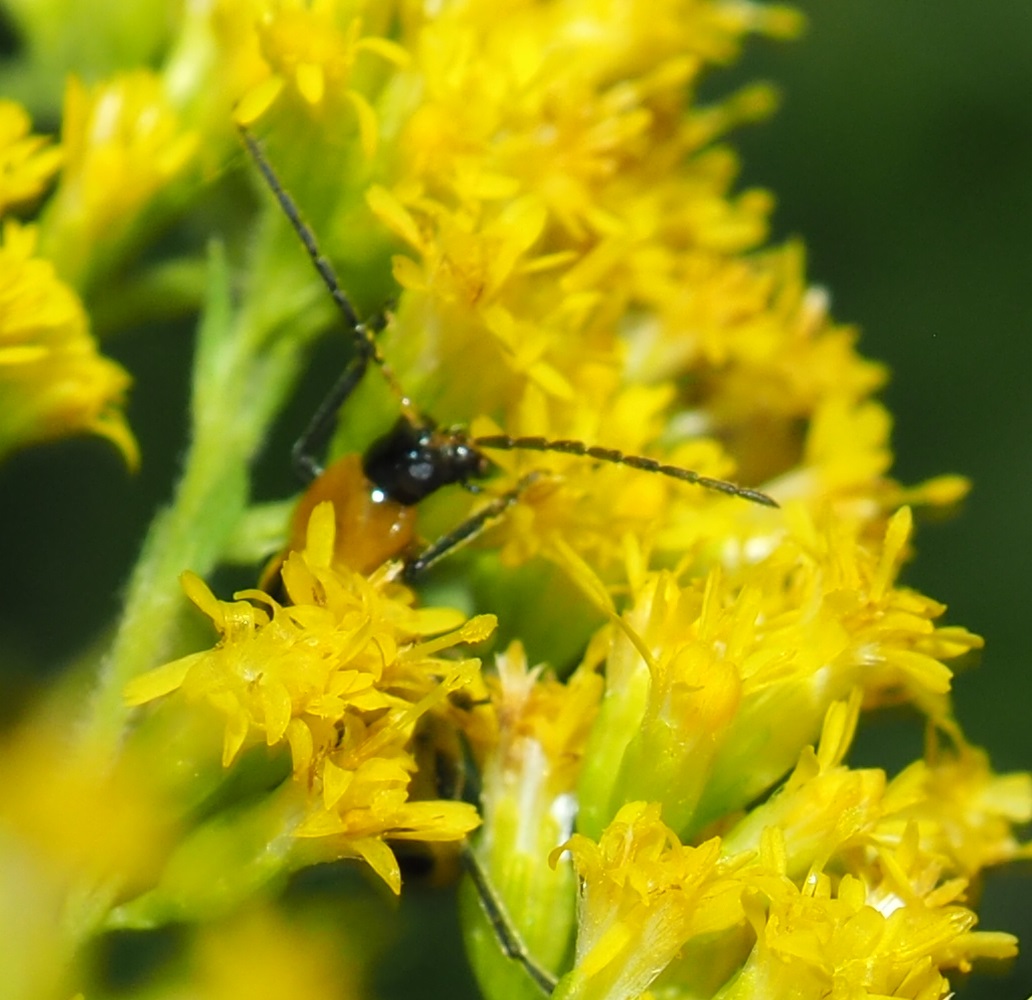
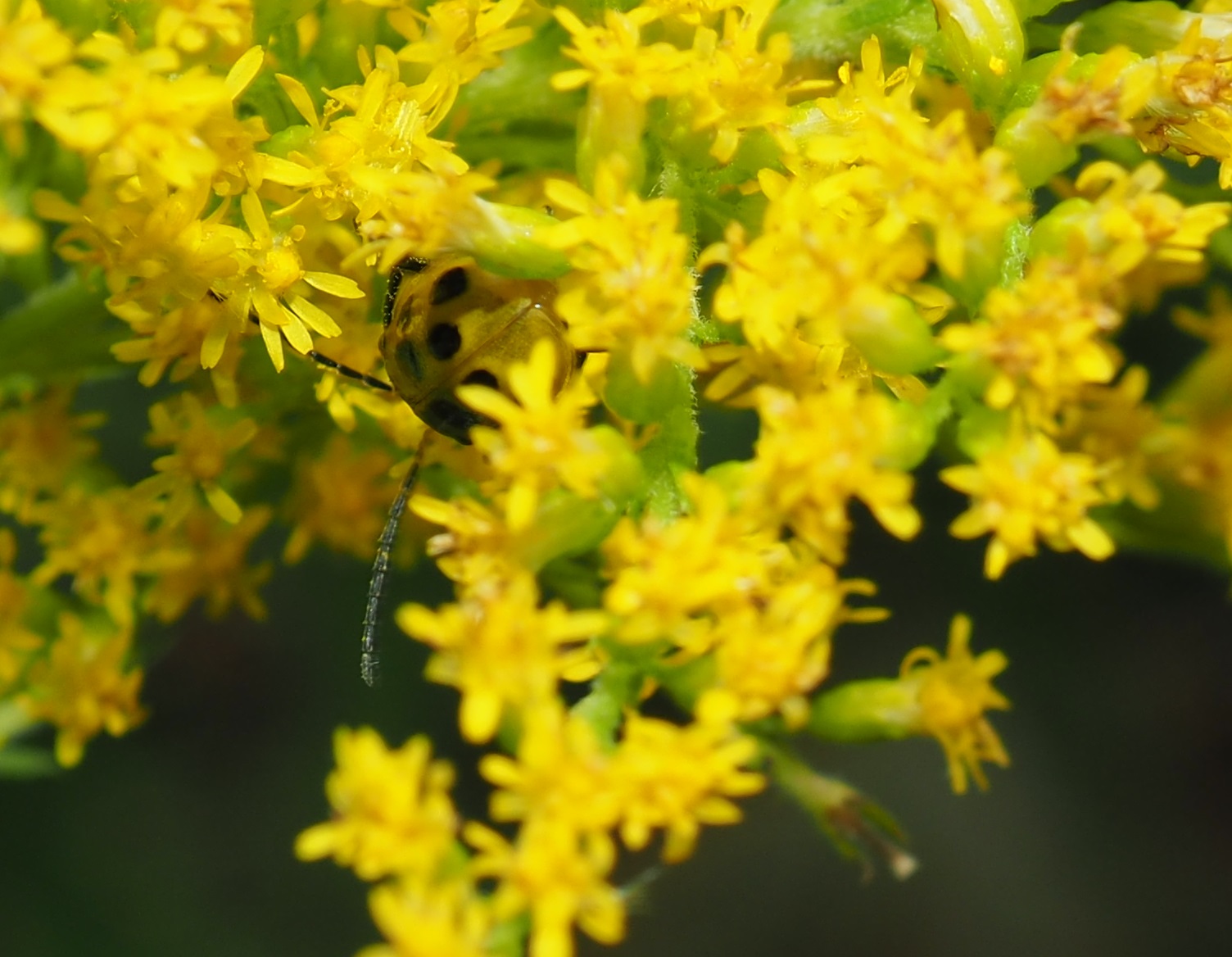
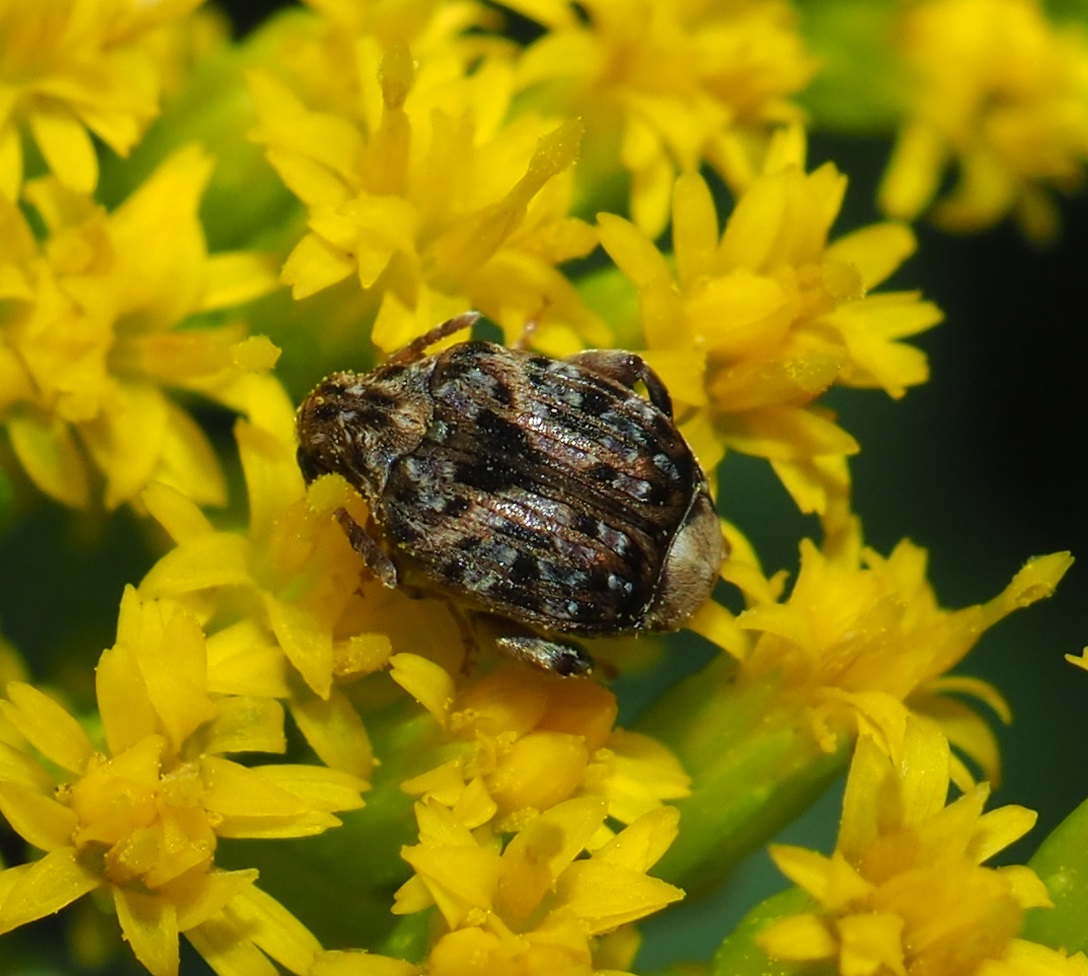
Is this one a beetle or a bug? It was caught by a fairly small spider, who only lets us see the lovely ventral (tummy) view. Is the second picture of a beetle, a bug, a fly or a moth? I believe it is a moth. Now what is this third picture? a) a beetle? b) a bird? If you said, "a bird", you are actually quite close. It is one feather off some bird but isn't it a thing of beauty?
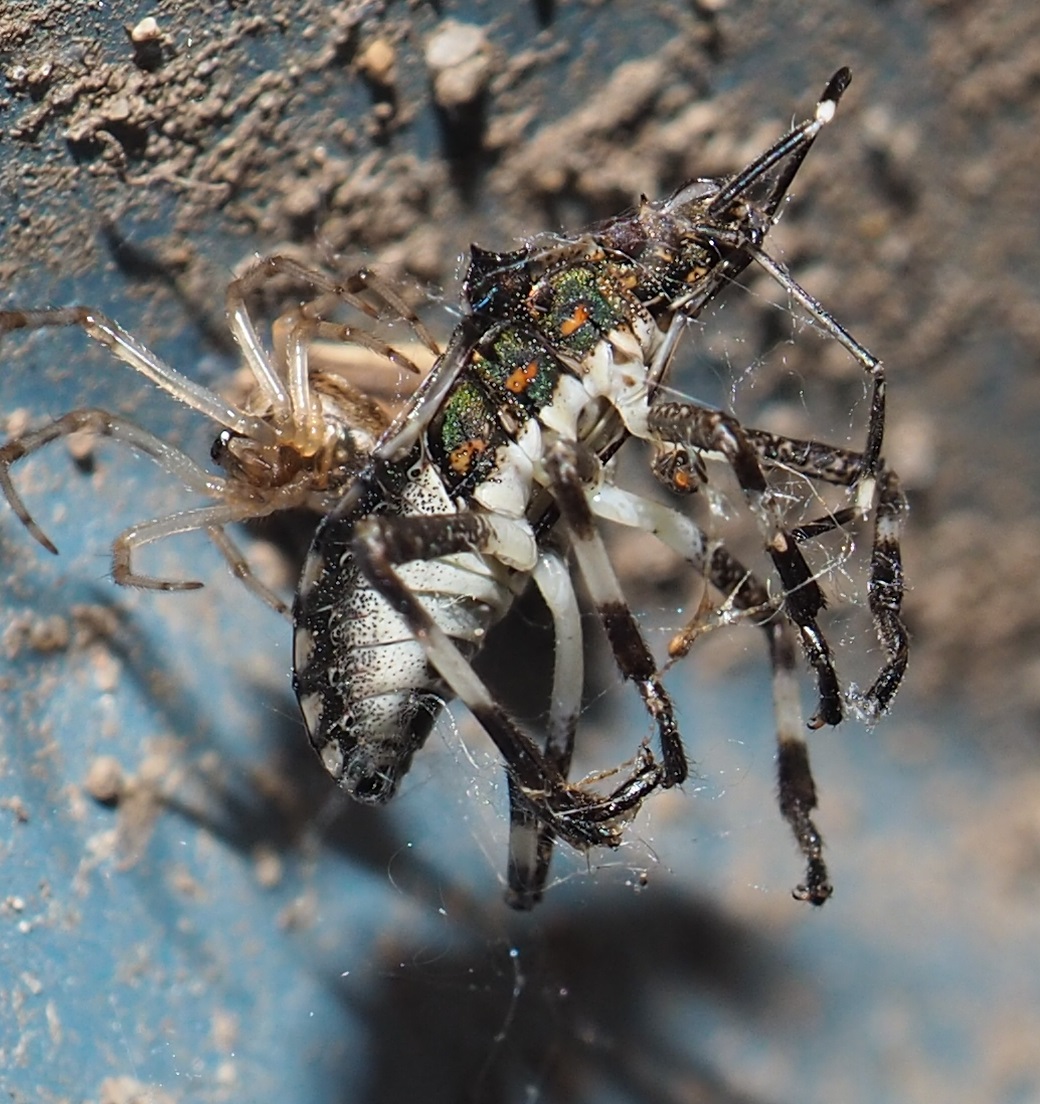
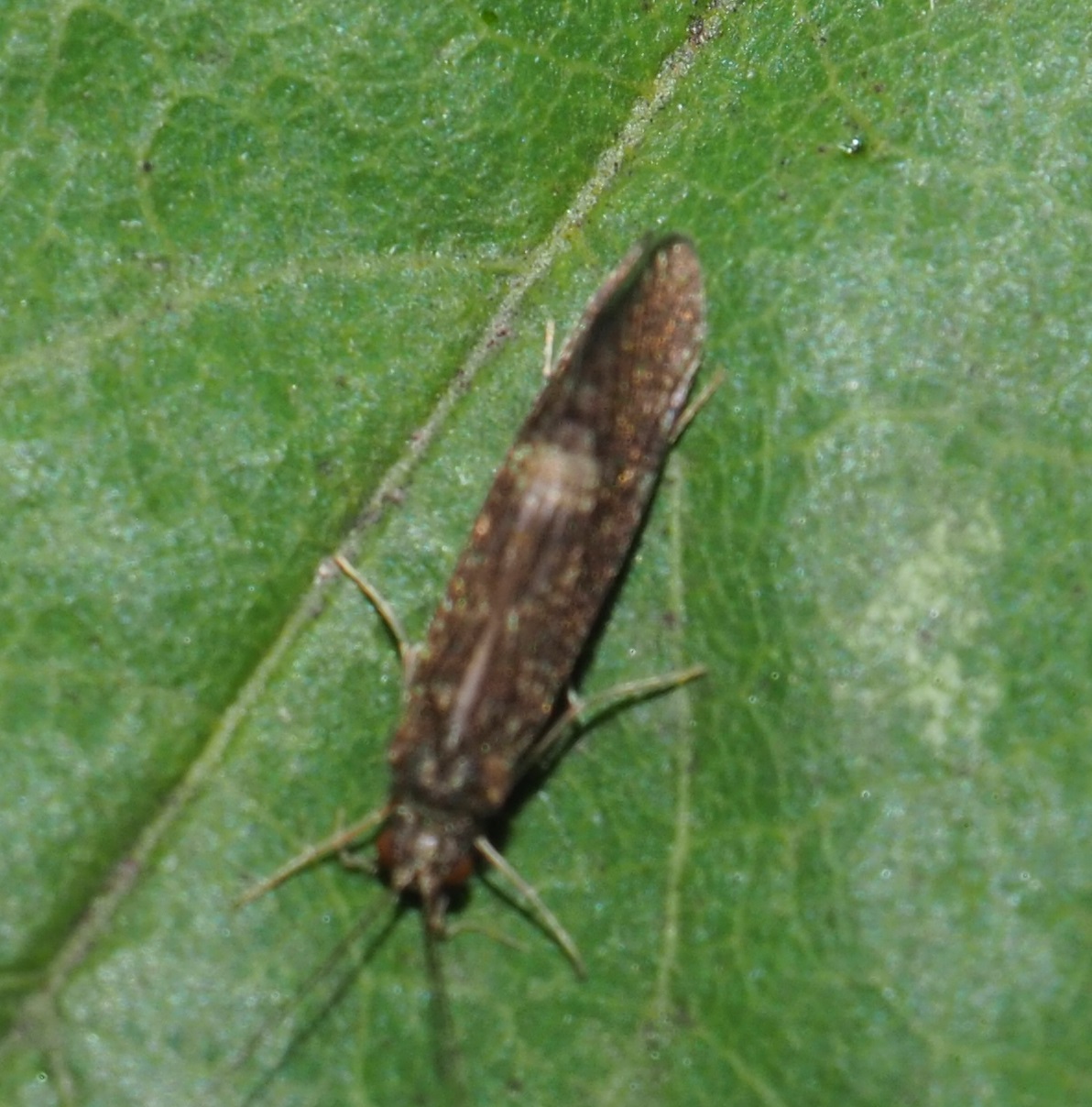
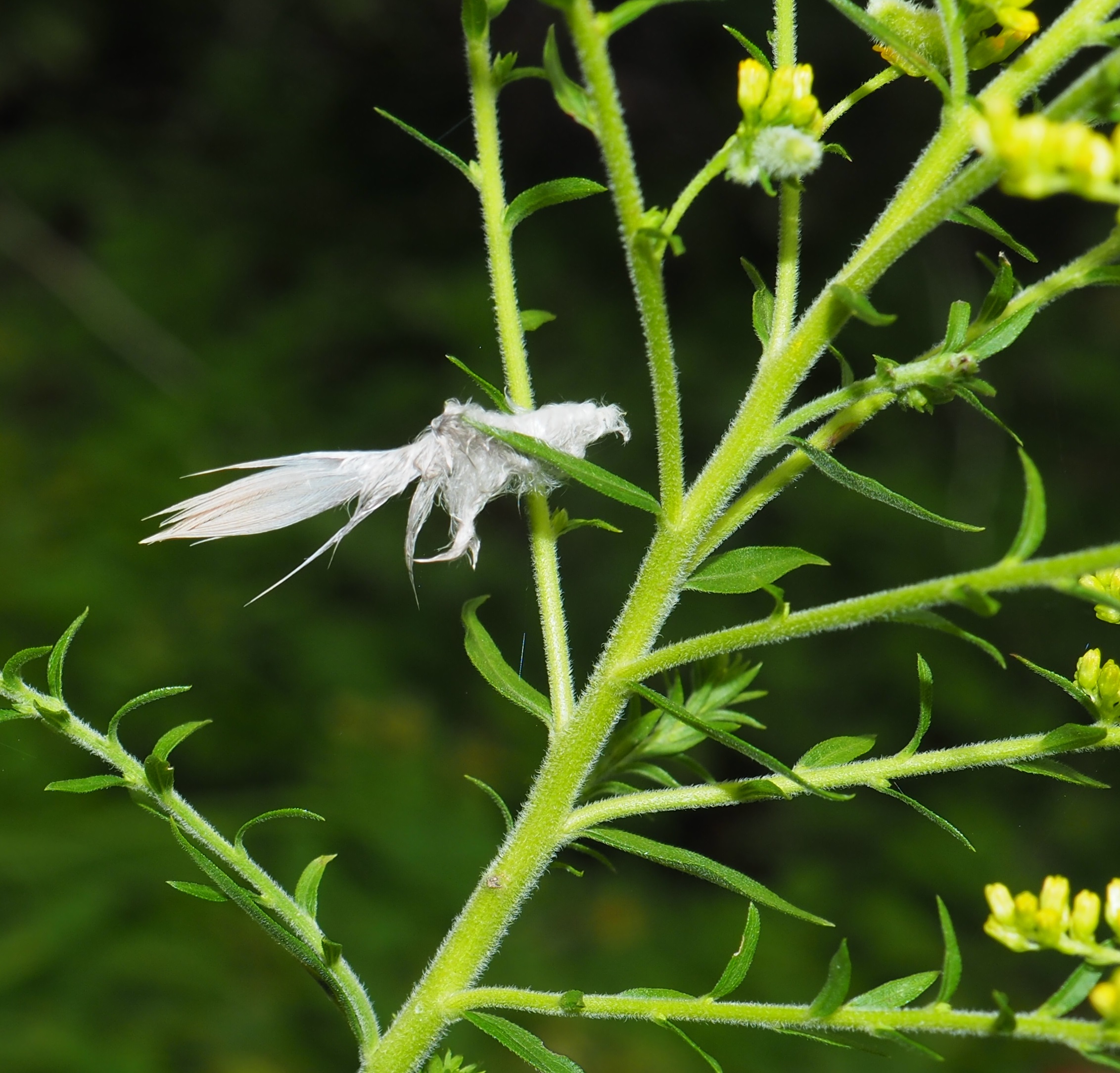 :
:
I've been looking for an ambush bug since a friend on iNaturalist.org said he had one on his phlox. Finally here it is on Goldenrod! I think it is probably the male of one of the two species we get in Michigan... Next is one underneath a stem. And Third is a full-dorsal view.
Yesterday I saw four of them on the goldenrod (far apart from one another.)
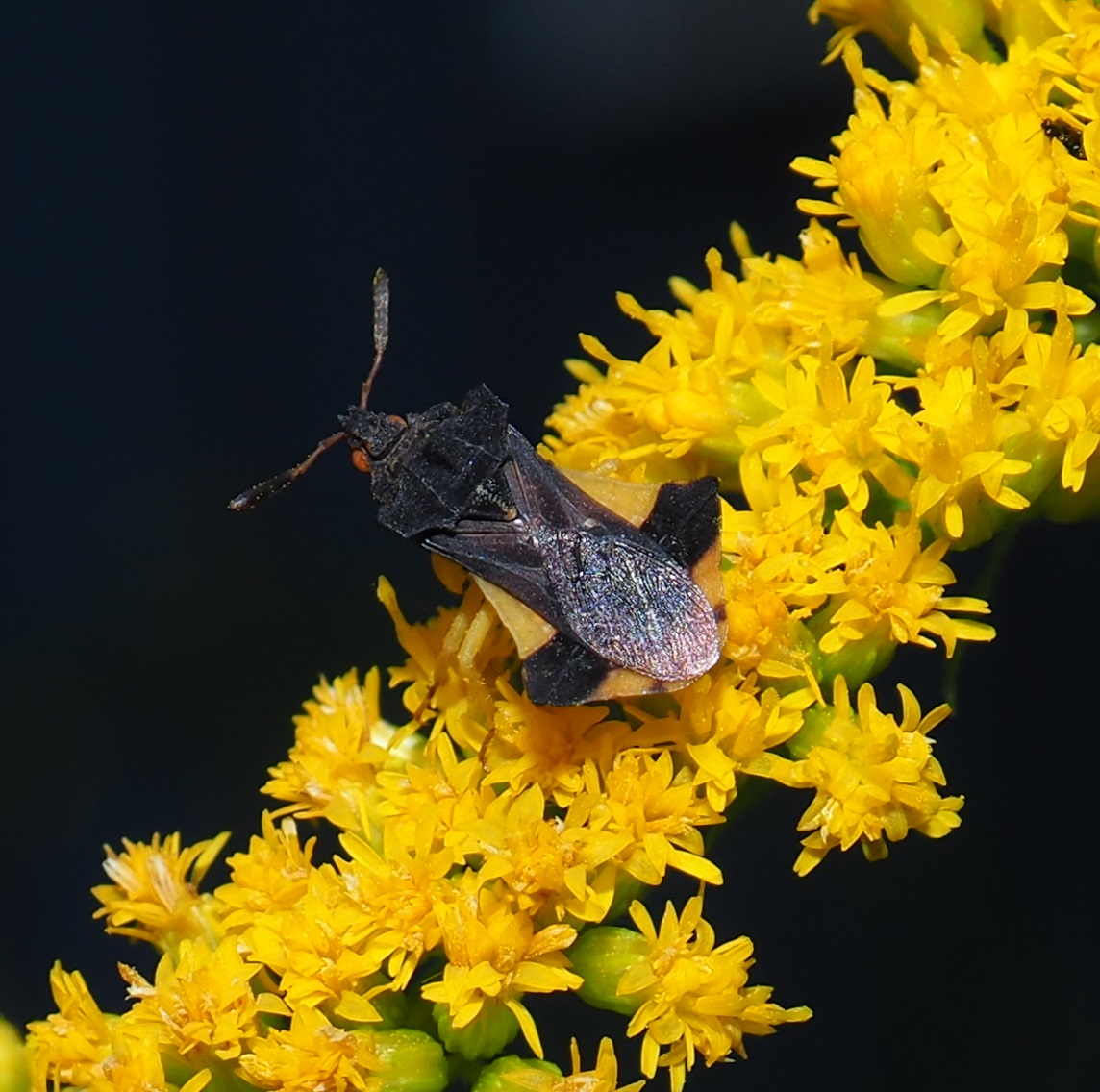
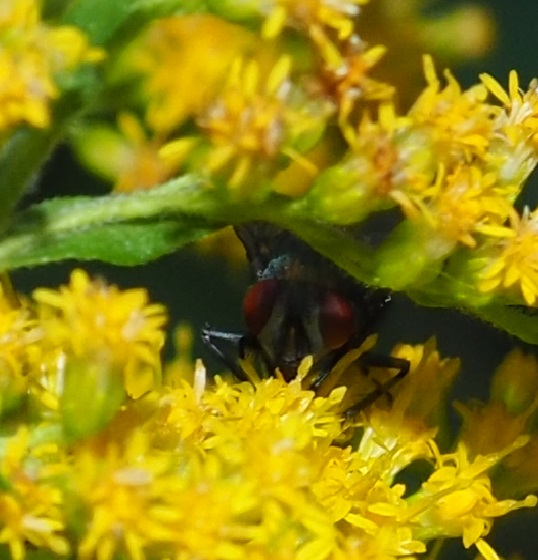

Yesterday I saw at least 5 Assassin Bug (nymphs) in widely scattered places in the back yard. But I'm only showing you one of them. Oh, I can't resist this one more shedding off its old nymphal skin. It will have a few more of those before it's an adult. Third picture: a Boxelder Bug in the goldenrod.
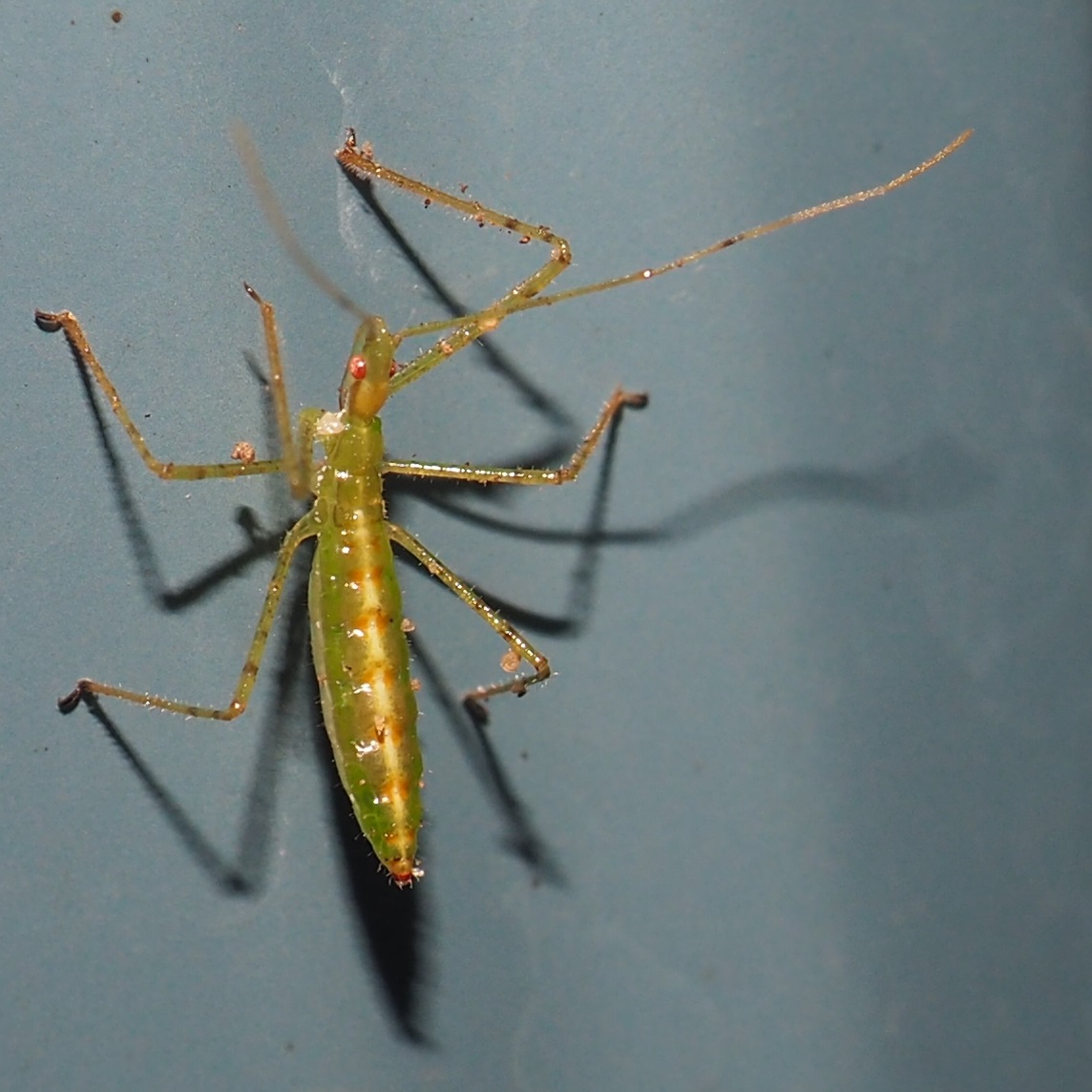
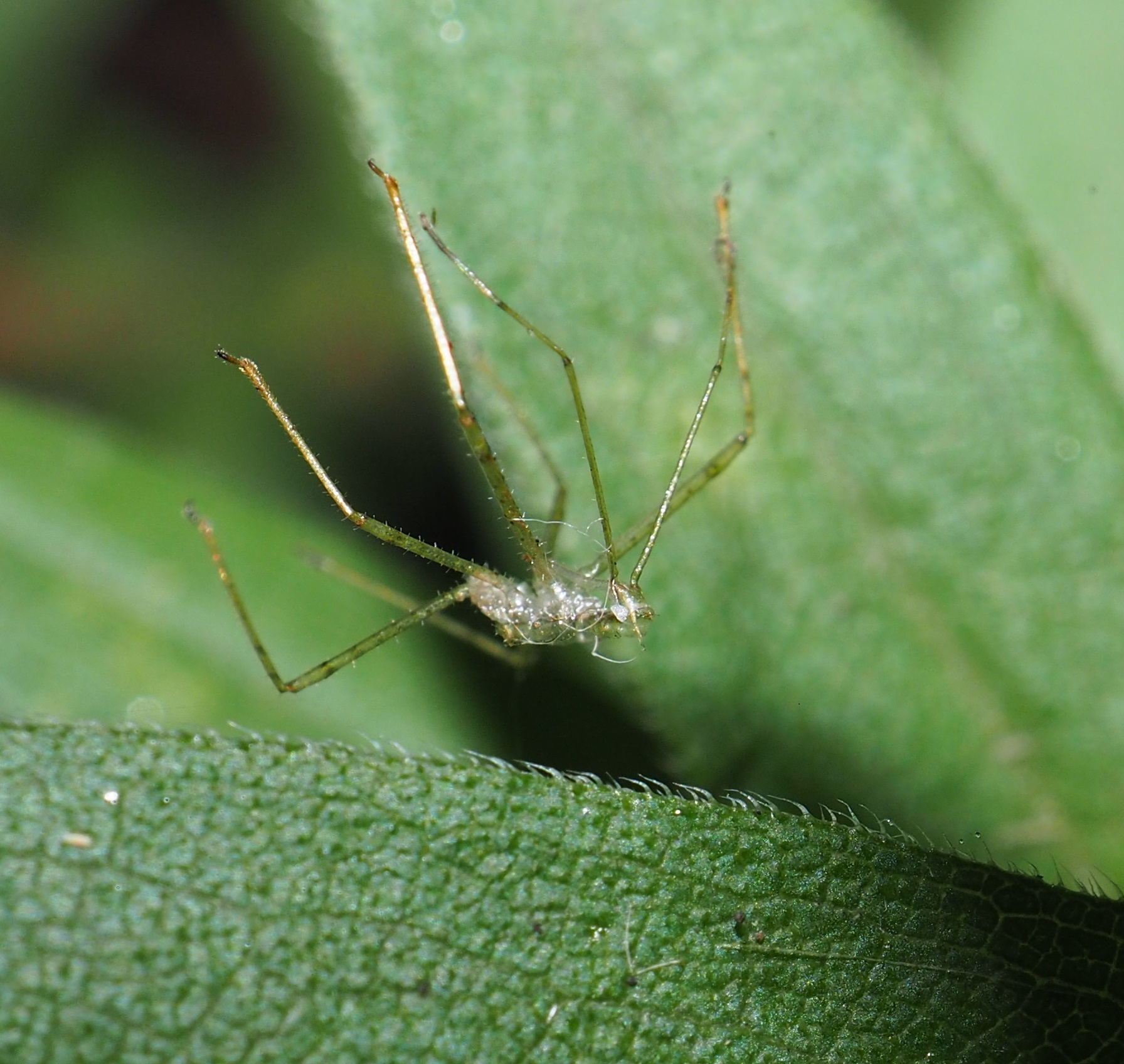
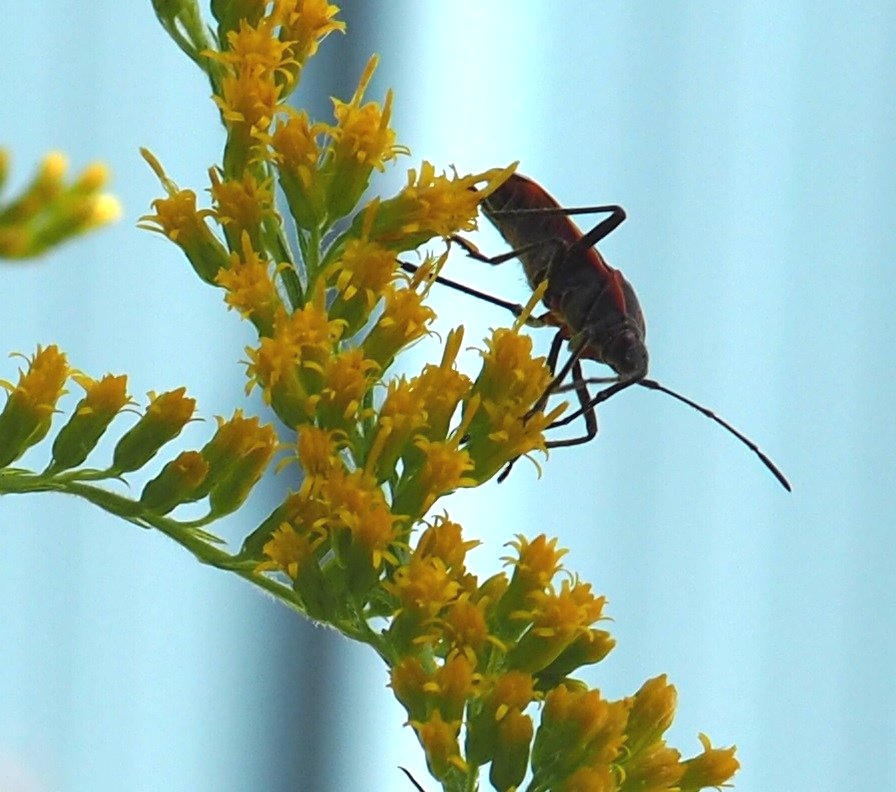
There were quite a few leafhoppers too: one of the many many whitish ones; a Candy-Striper with green instead of blue; and one that we did indeed see earlier this summer and last.
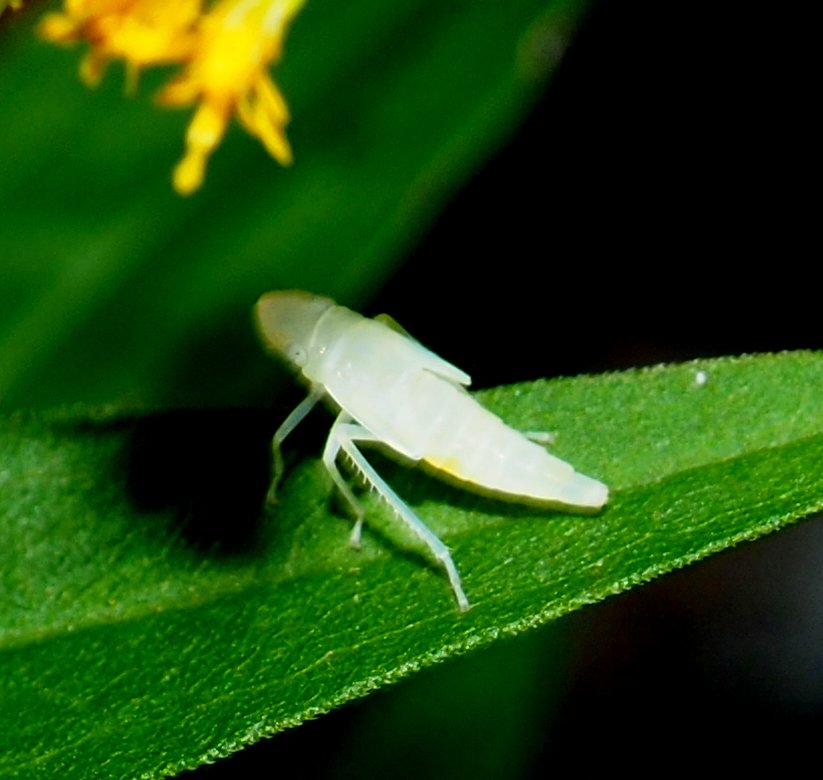


A brightly colored bug of some sort. It seems to be bewitched by the green Aurora. Then a Plant Bug that we saw last year I think. It may be a Lygus bug. The next brown bug is probably a Spittle Bug.
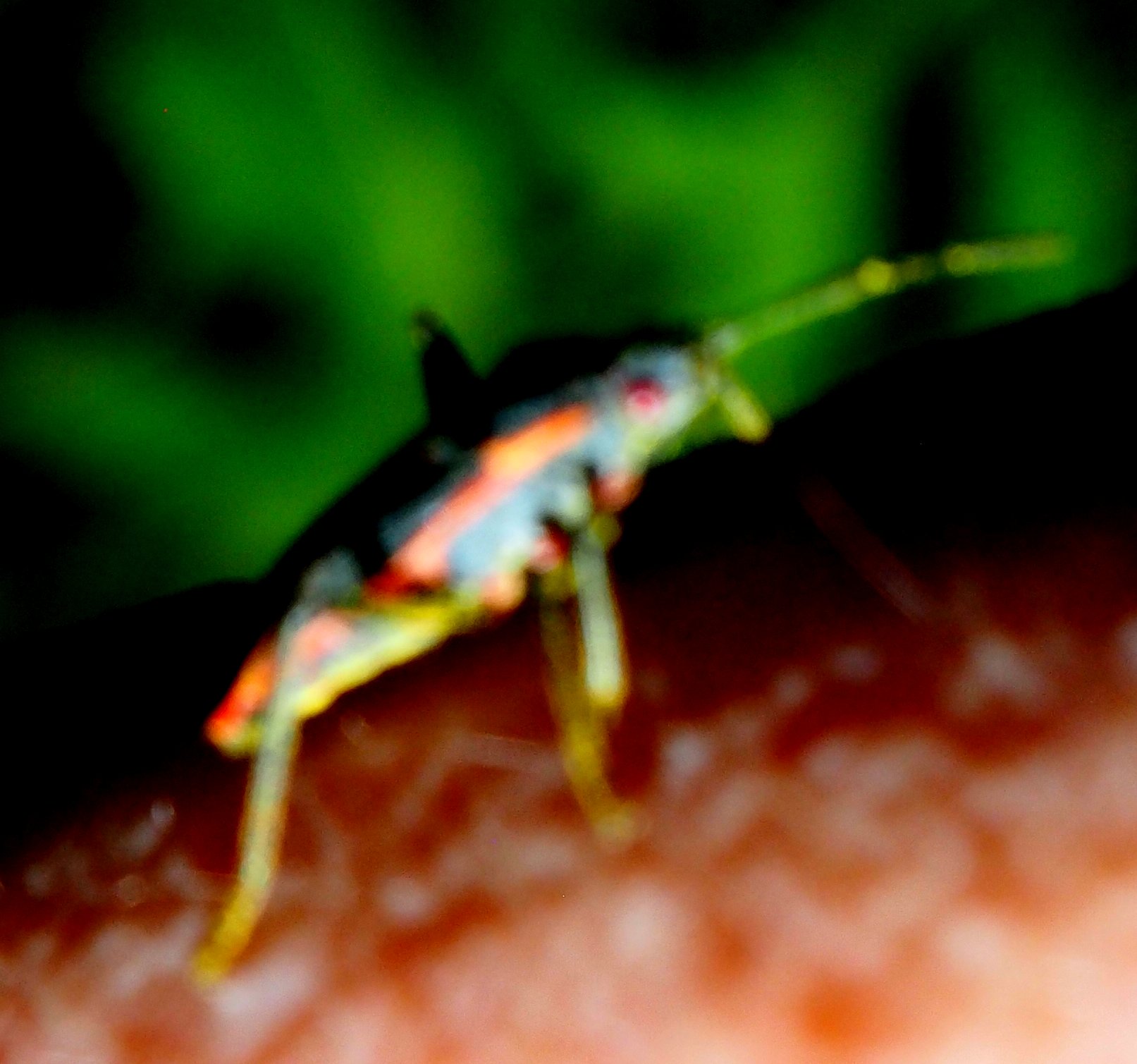

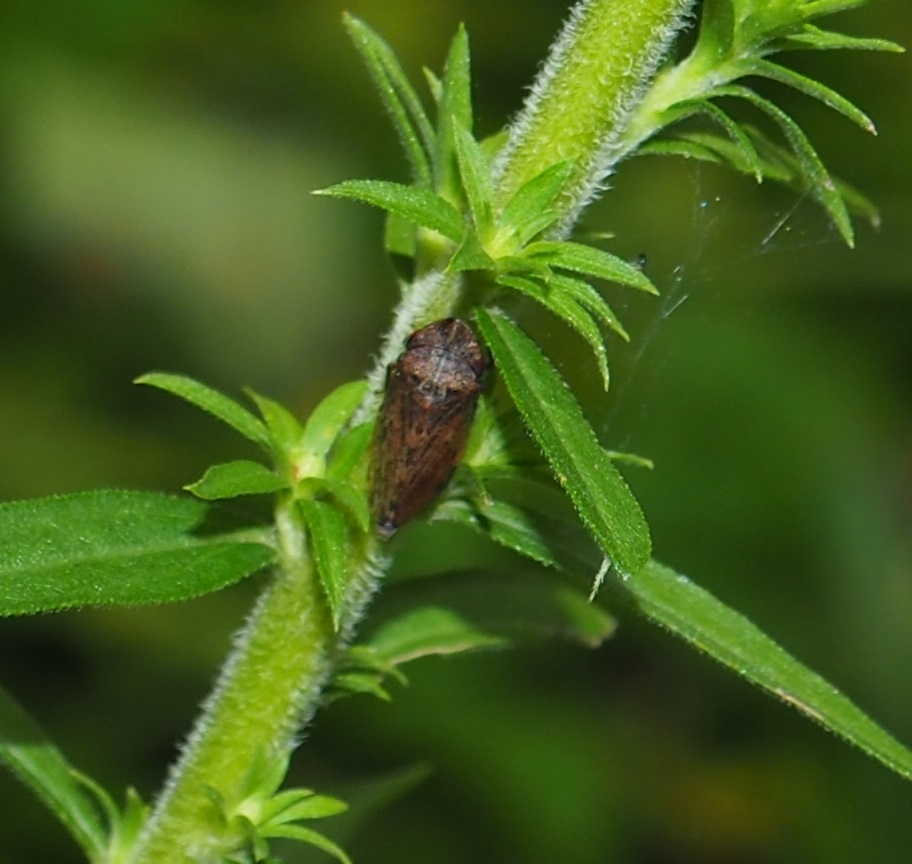
Here on one of the many sapling Redbuds right on the stem is an adult Two-mark Treehopper, and in the next photo, a white mass (one or many egg level Two-mark Treehoppers). An older instar baby Brown Marmorated Stink Bug, BMSB. Notice the white patch in the antennae. And a Stilt Bug.
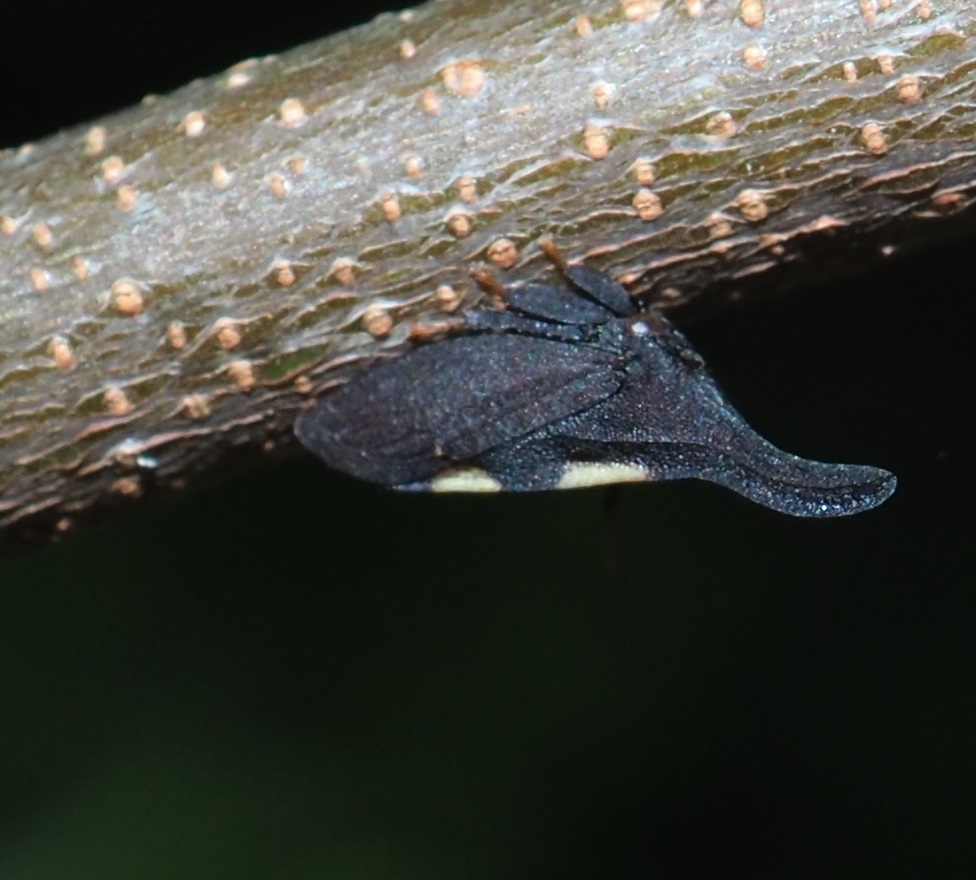
 8 29 18 1.jpg)

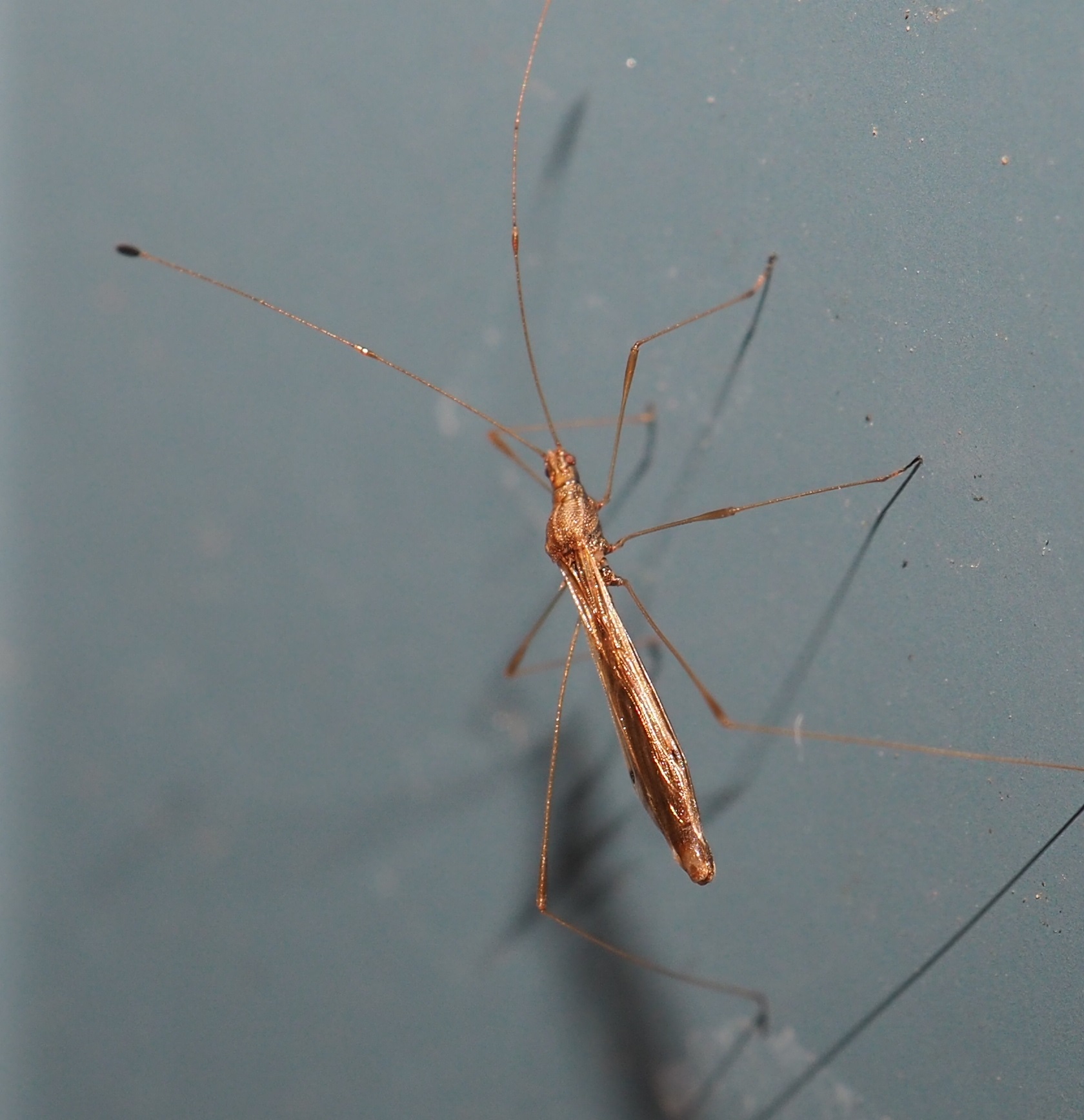
The Cabbage White Butterfly, Pieris rapae, likes the goldenrod as much as the rest of the Backyard Clug. Since we've found our way over to the Butterflies we might as well make a small hop to the Moths. Yesterday this gloriously patterned Moth, the Ailanthus Webworm showed up but did let me get any really good photos. Here is the best one, followed by the best of about thirty shots from last year.
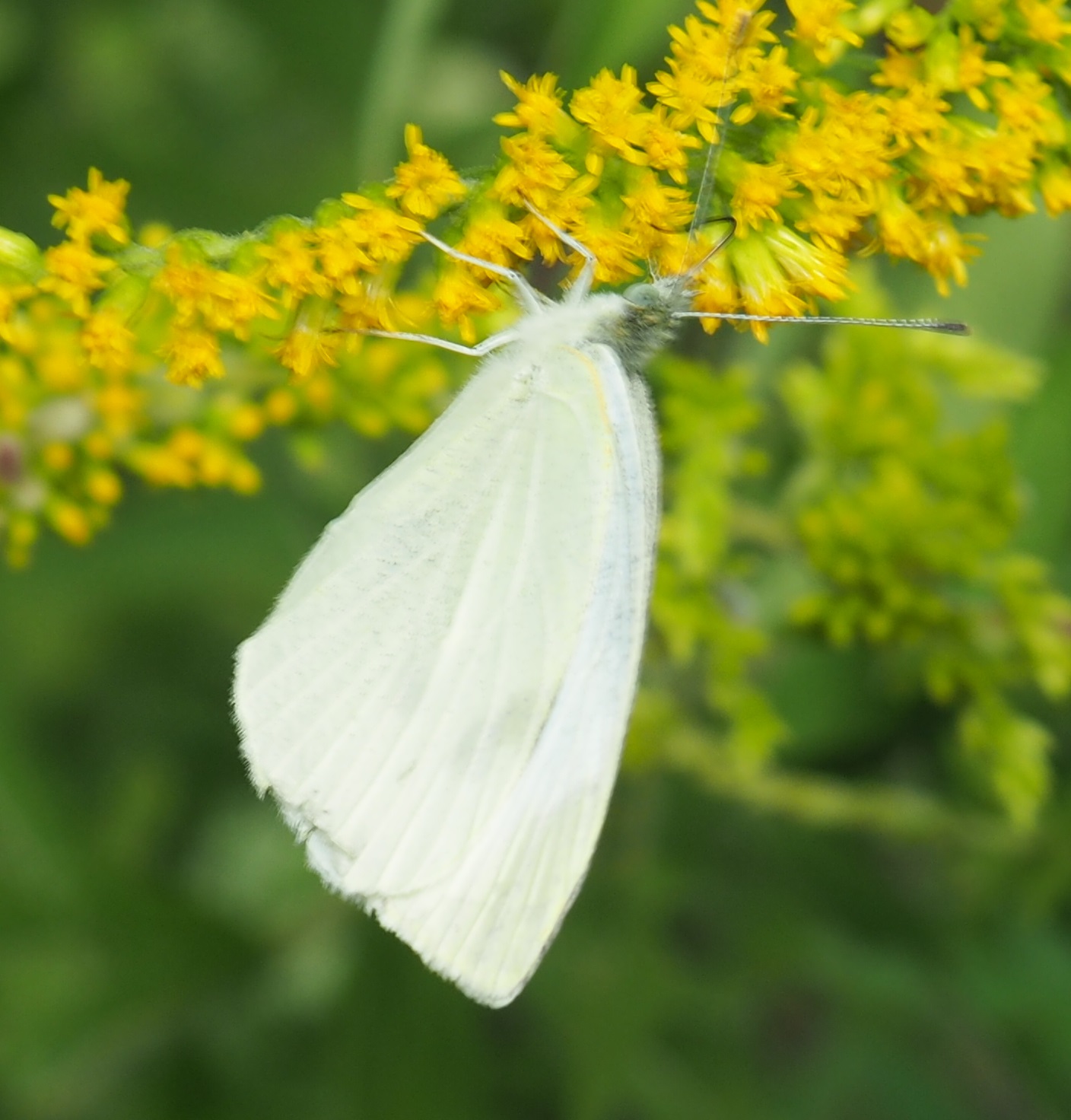
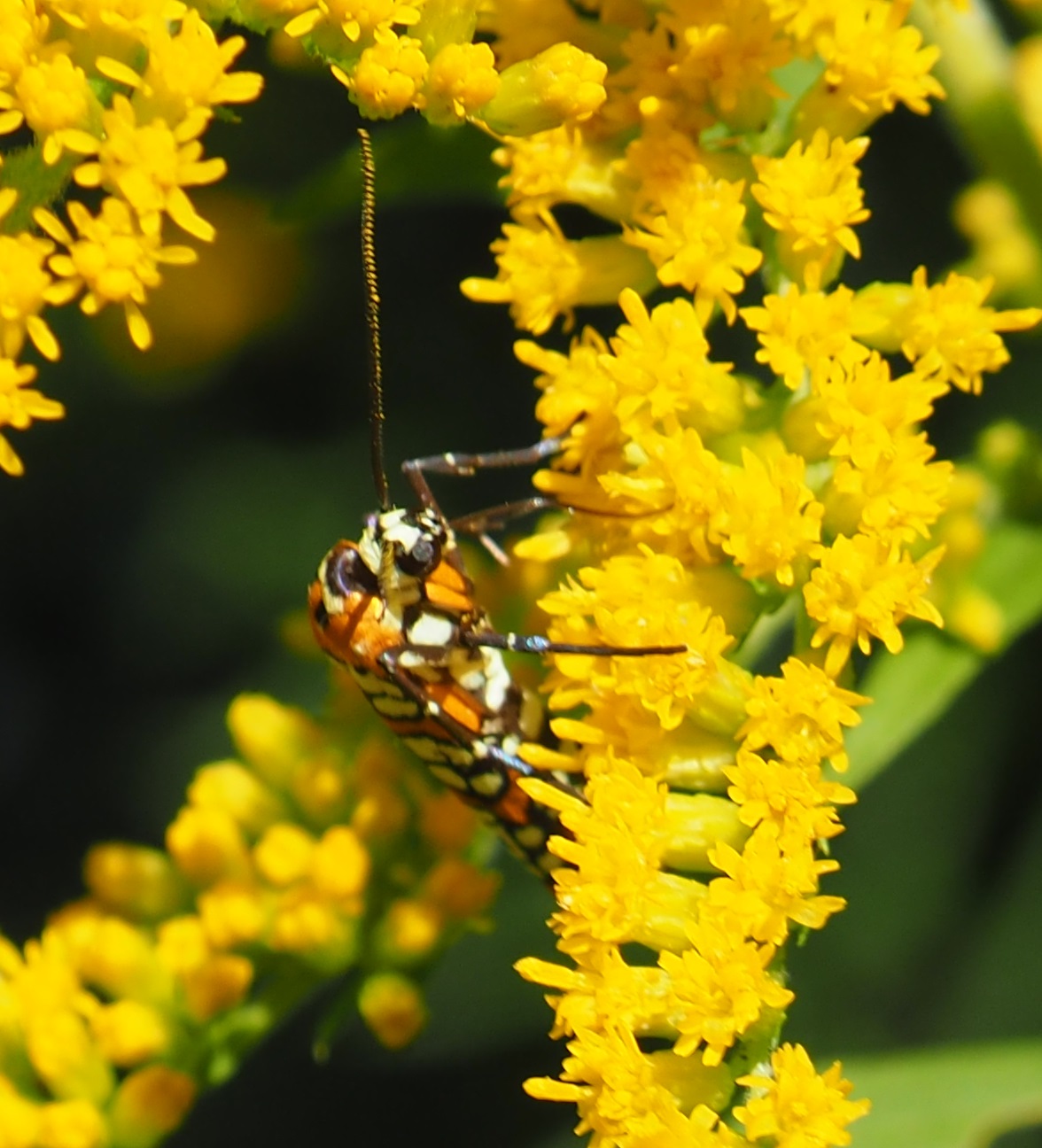
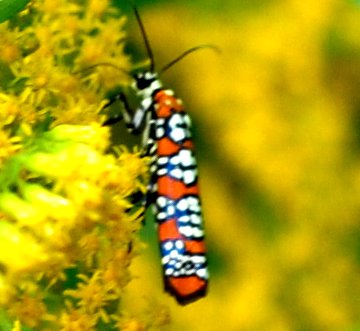
One of the big surprises this year was this moth, the Dark-spotted Palthis (or maybe its close match the Light-Spotted Palthis). By the way, I got a copy of the Peterson's Field Guide to the Moths, and it has been amazingly helpful, mostly because a lot of books specialize in gorgeous pictures of the most gorgeous Critters, and this one has a SCAD of pictures. You might want a hand magnifier for some of the photos. The second picture is of something I call a Moth Rollup, as it usually is seen with its body formed into a tube. But I haven't gone to Peterson on this. The third is probably also a "Rollup", but maybe a Leaf Miner Moth.
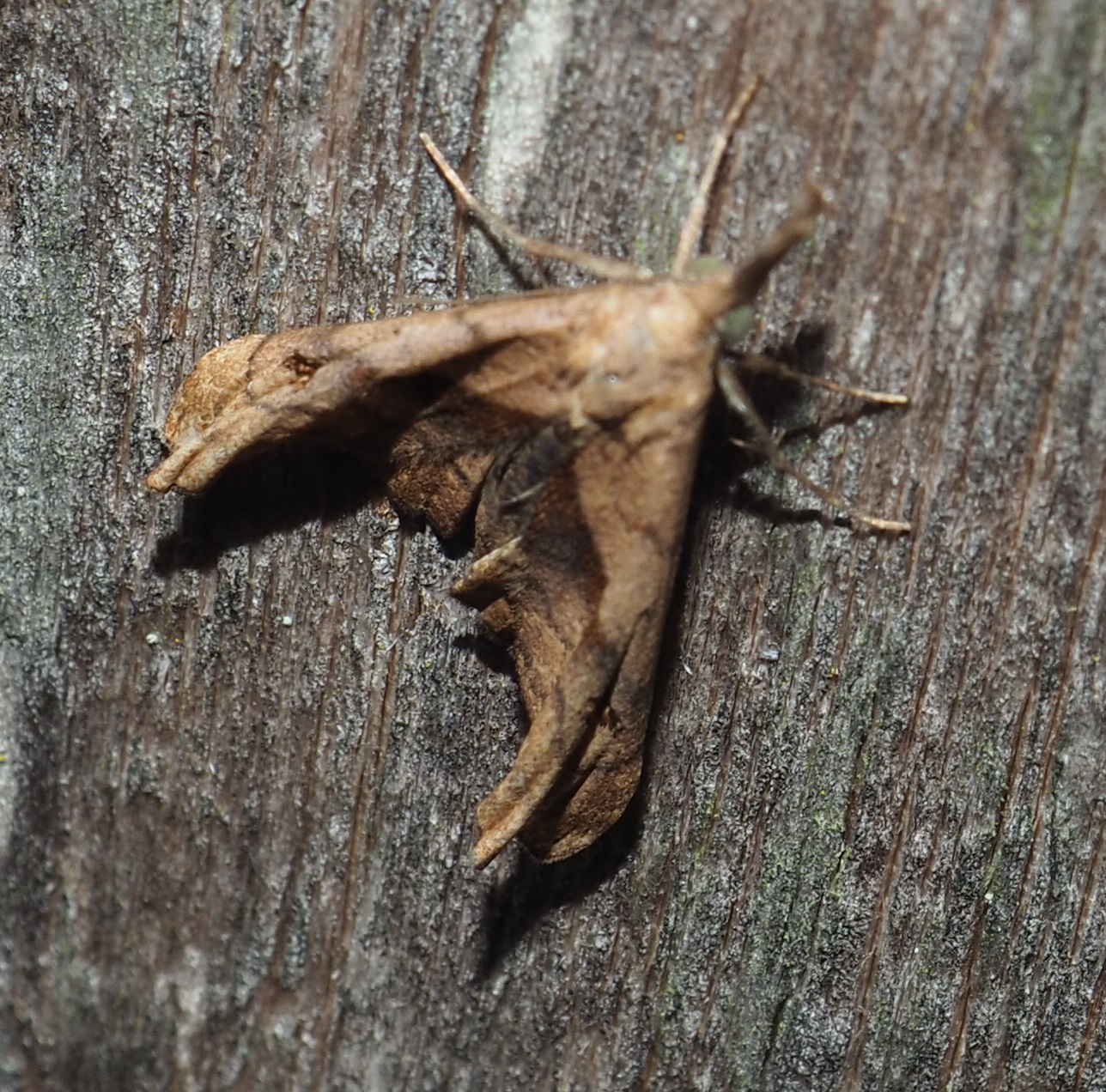
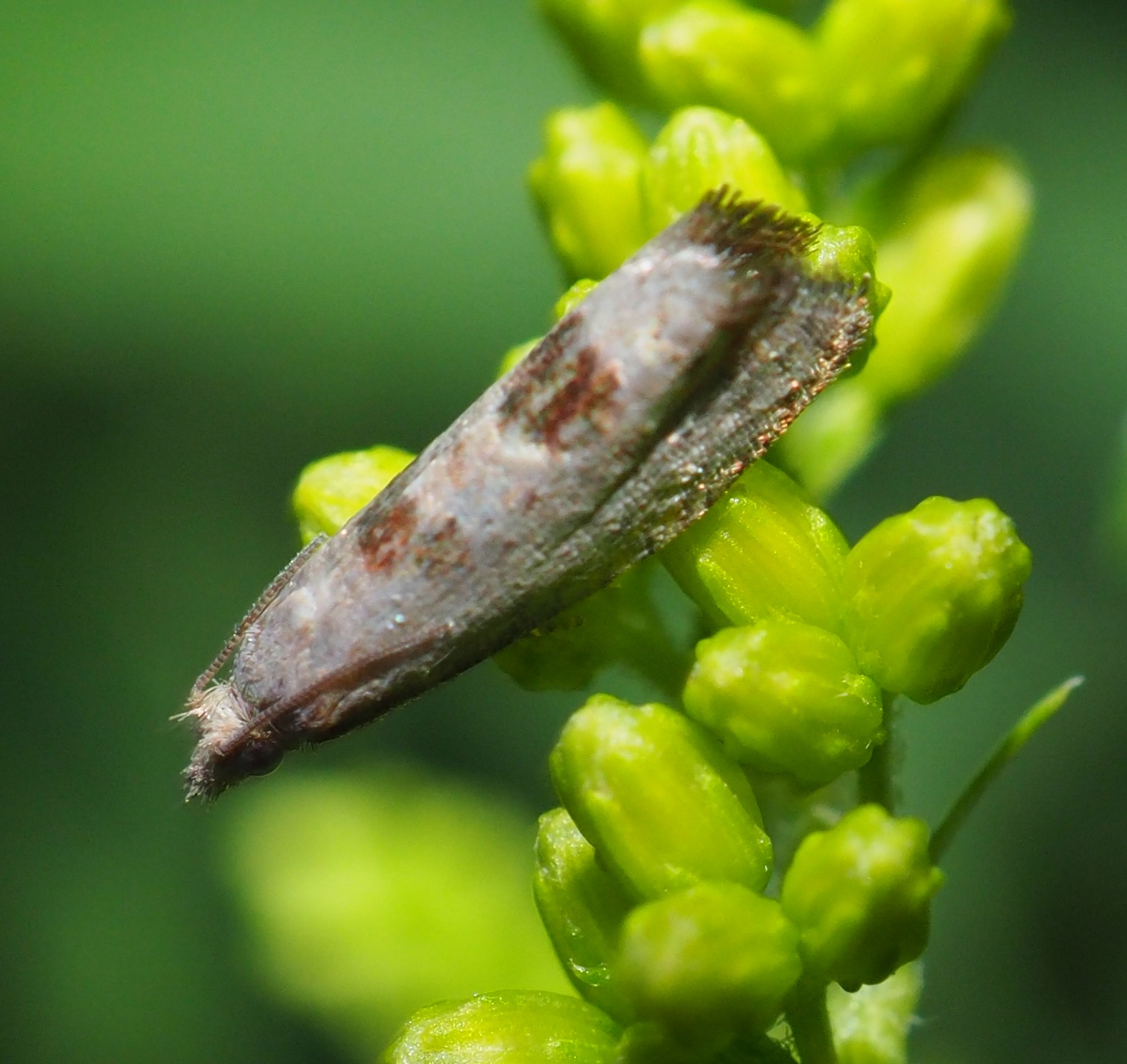
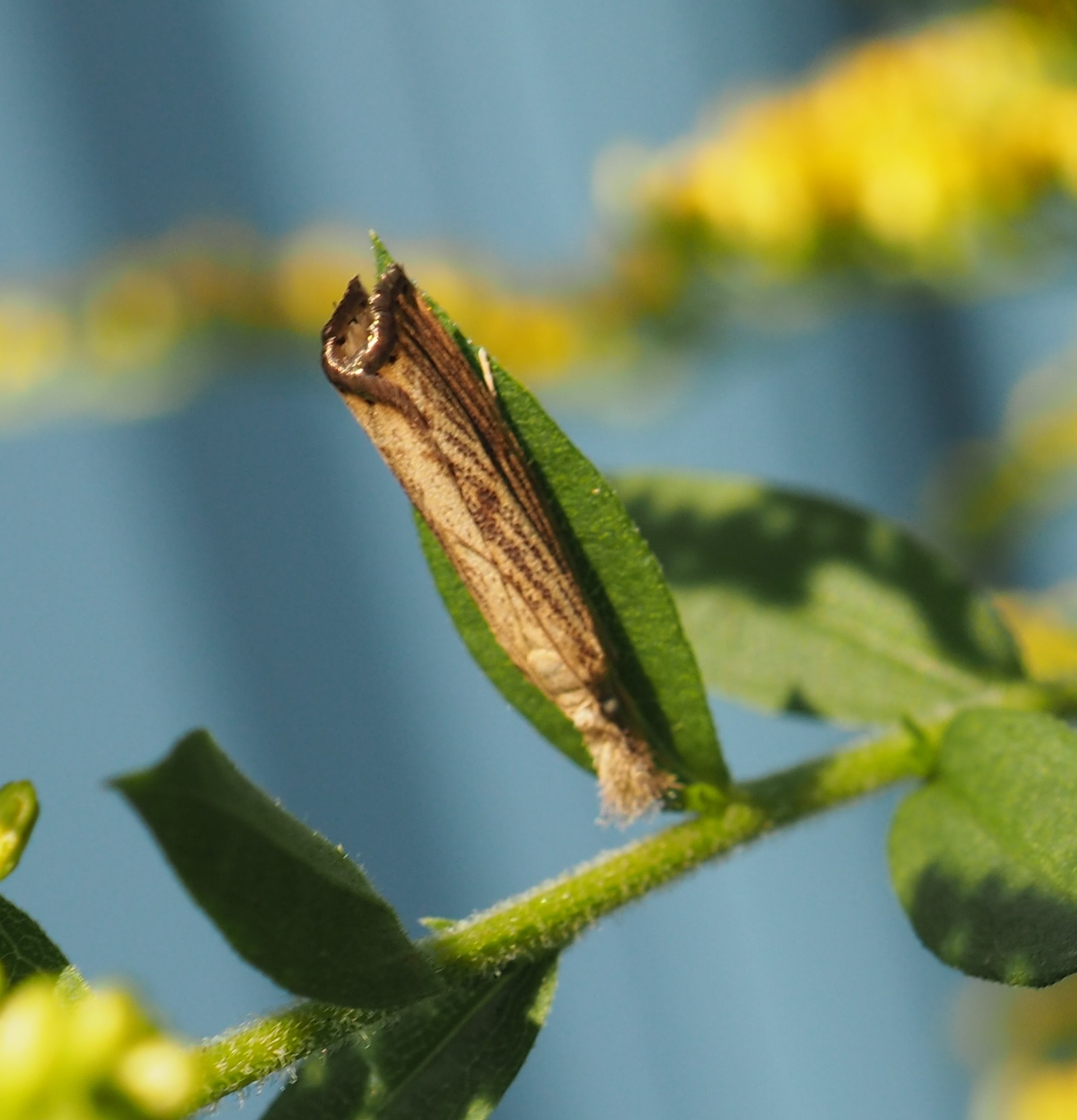
And last, the Yellow-collared Scape Moth. You might be interested that my brother in Texas also found one of these just this week. Second, a skipper, sort of in-between butterfly and moth. It's a Checkered Skipper. This Hairstreak Butterfly, the Grey (or Gray) Hairstreak, is a true goldenrod lover.
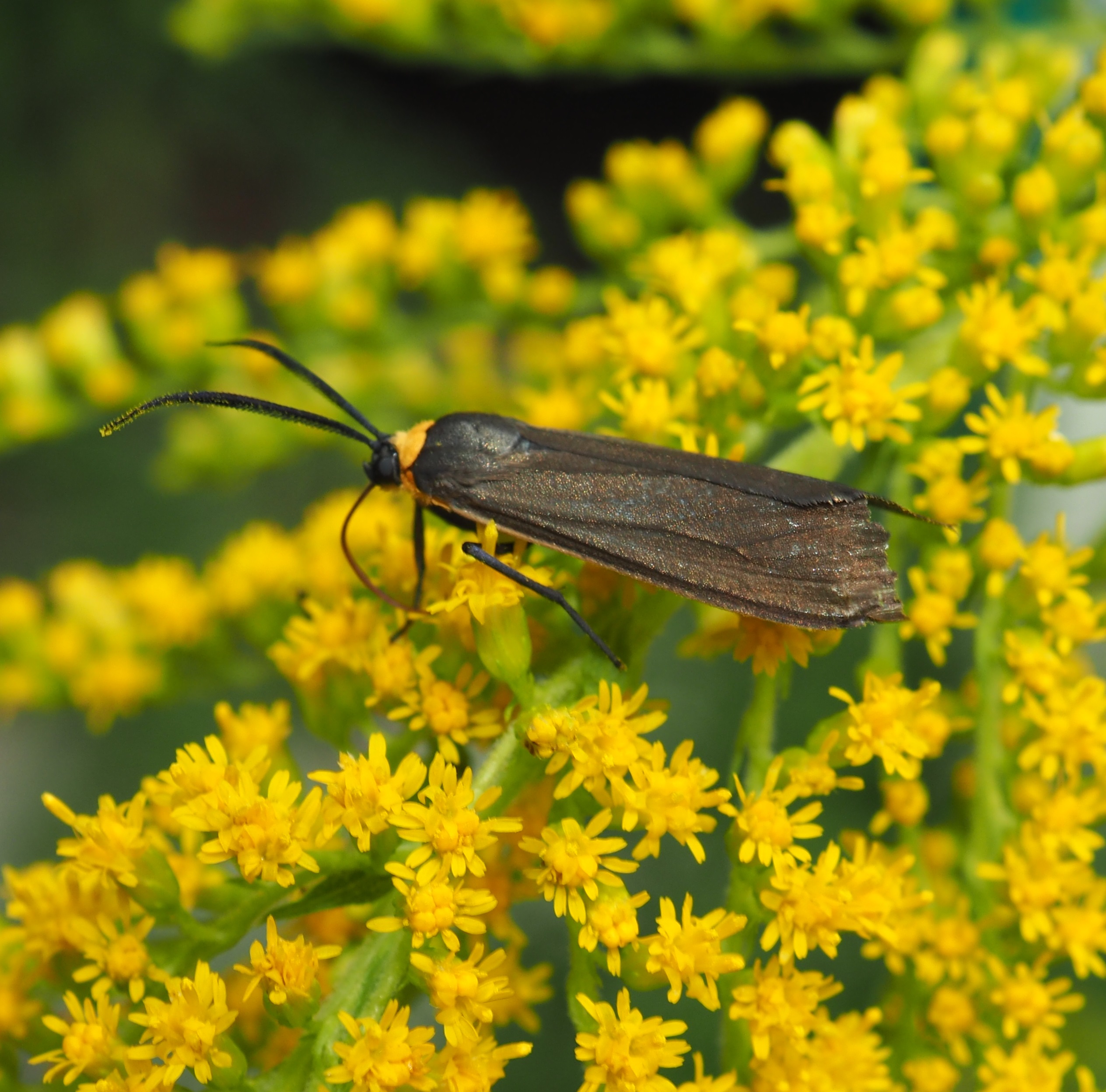
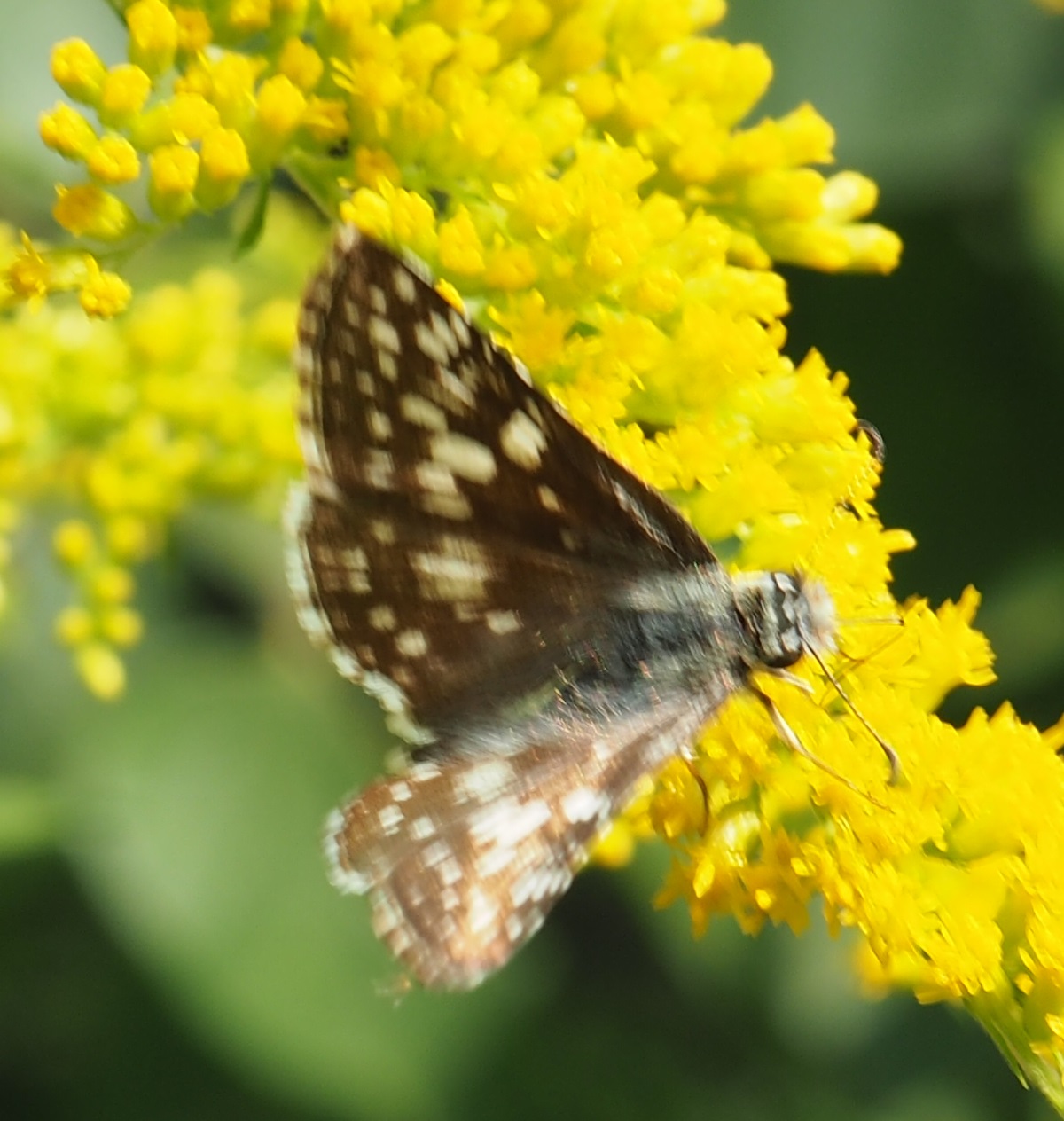
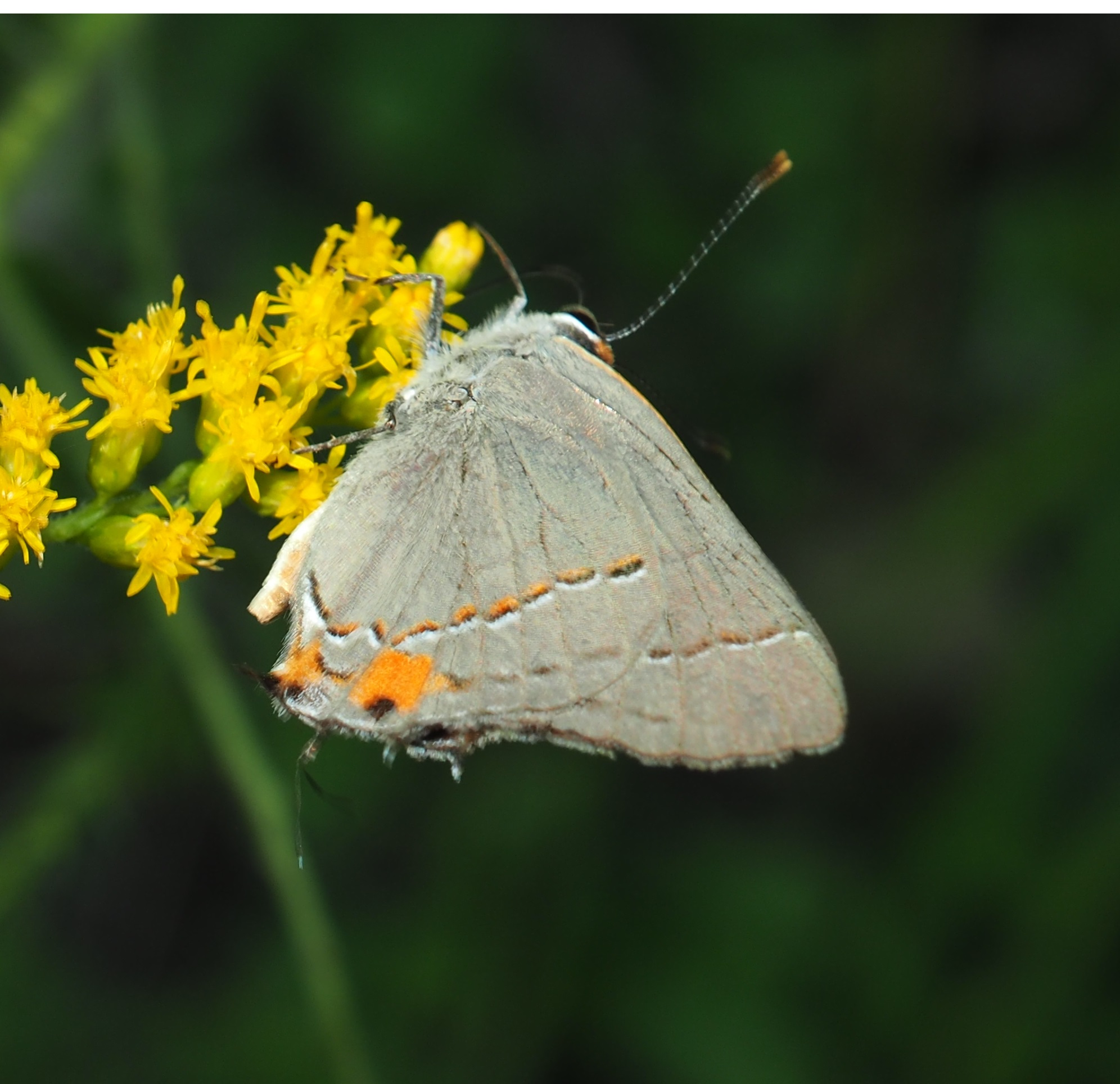
Let's visit the Flies after which I will take a Wet Burrito break. I can get one of those puppies at Lopez Taco House and it is so filling that I can have three or four meals off it later. Here is a lovely little crane fly, not large but with nice wing patterns and colors. Is this a gall midge or a fungus gnat? I will look it up in a bit. Third is the common but gorgeous Gold Bottle Fly.
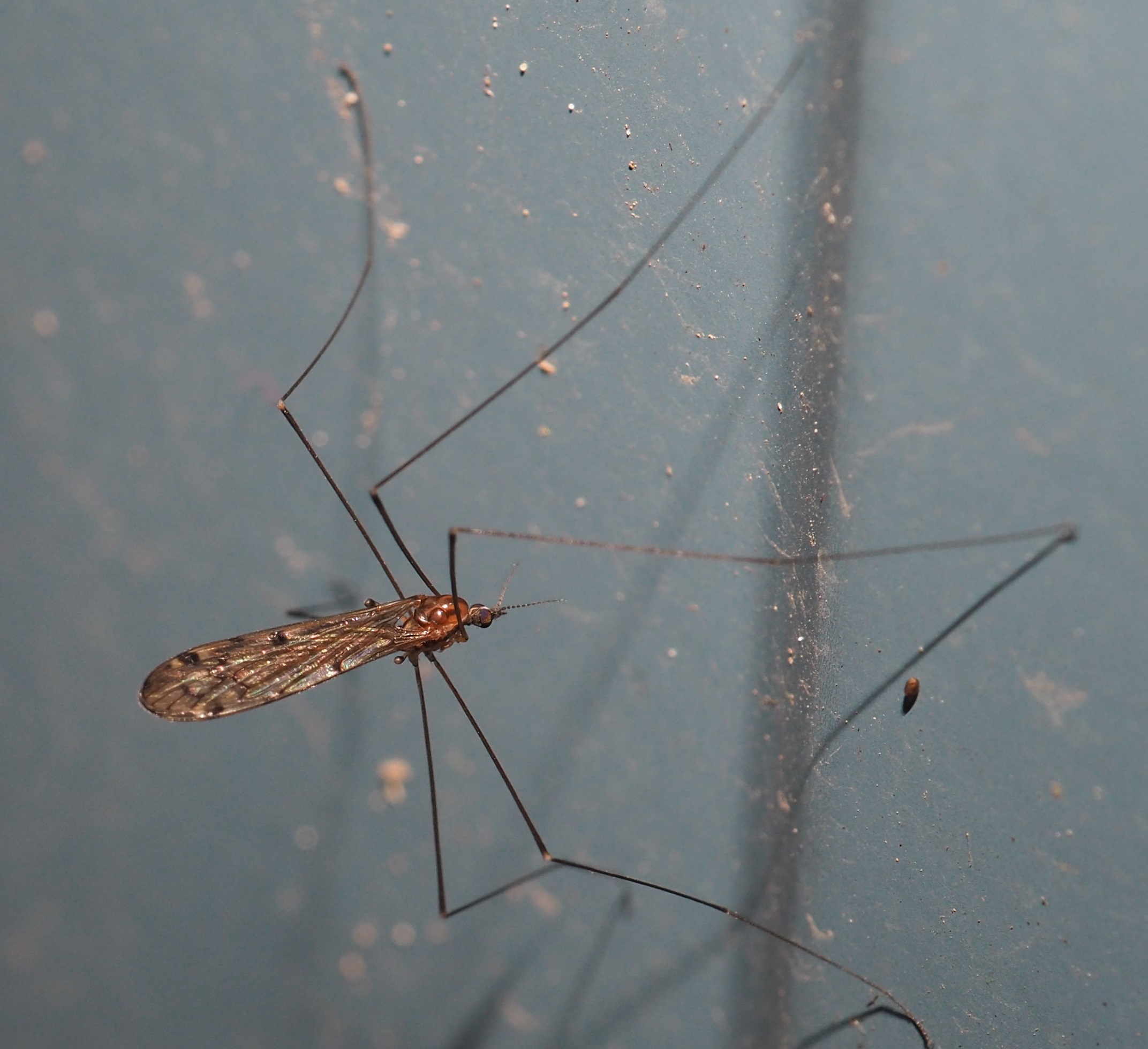
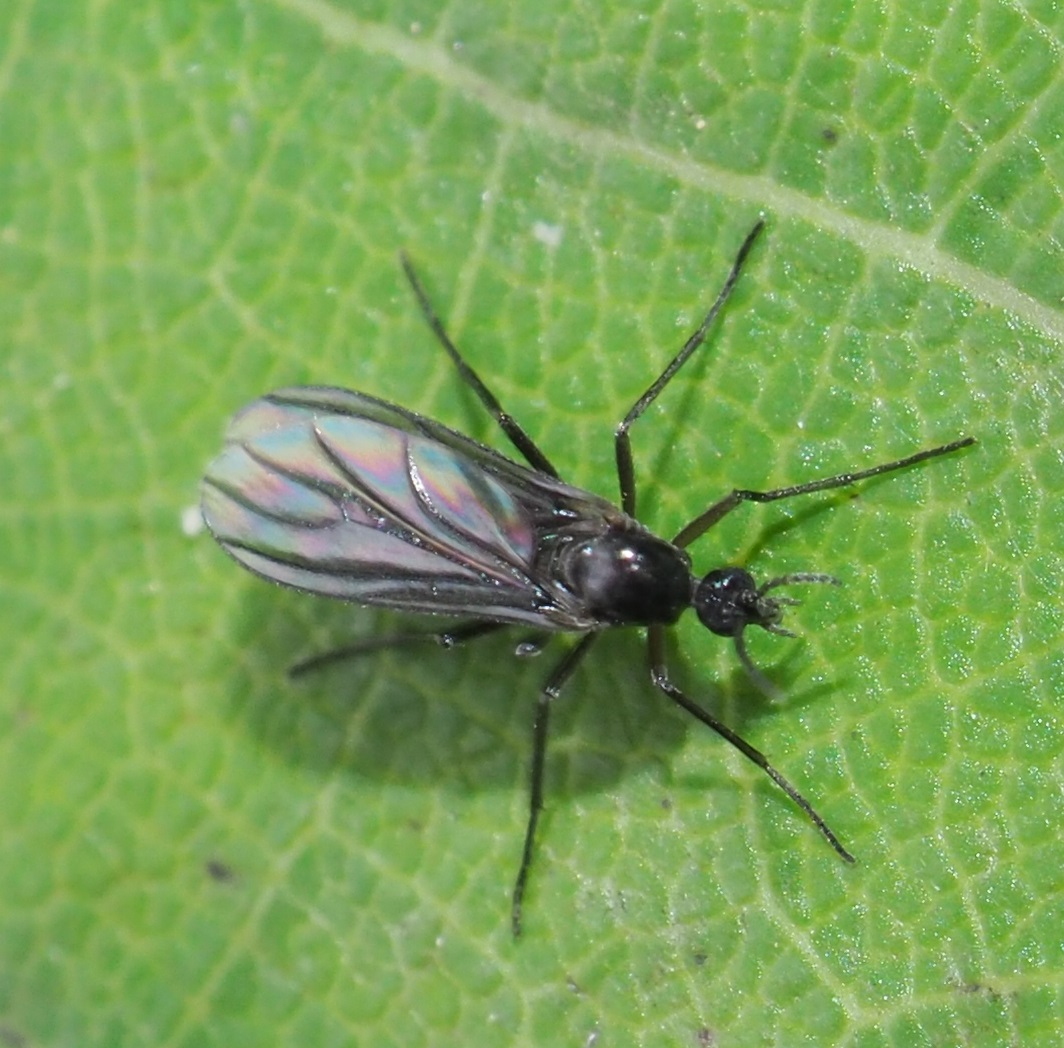
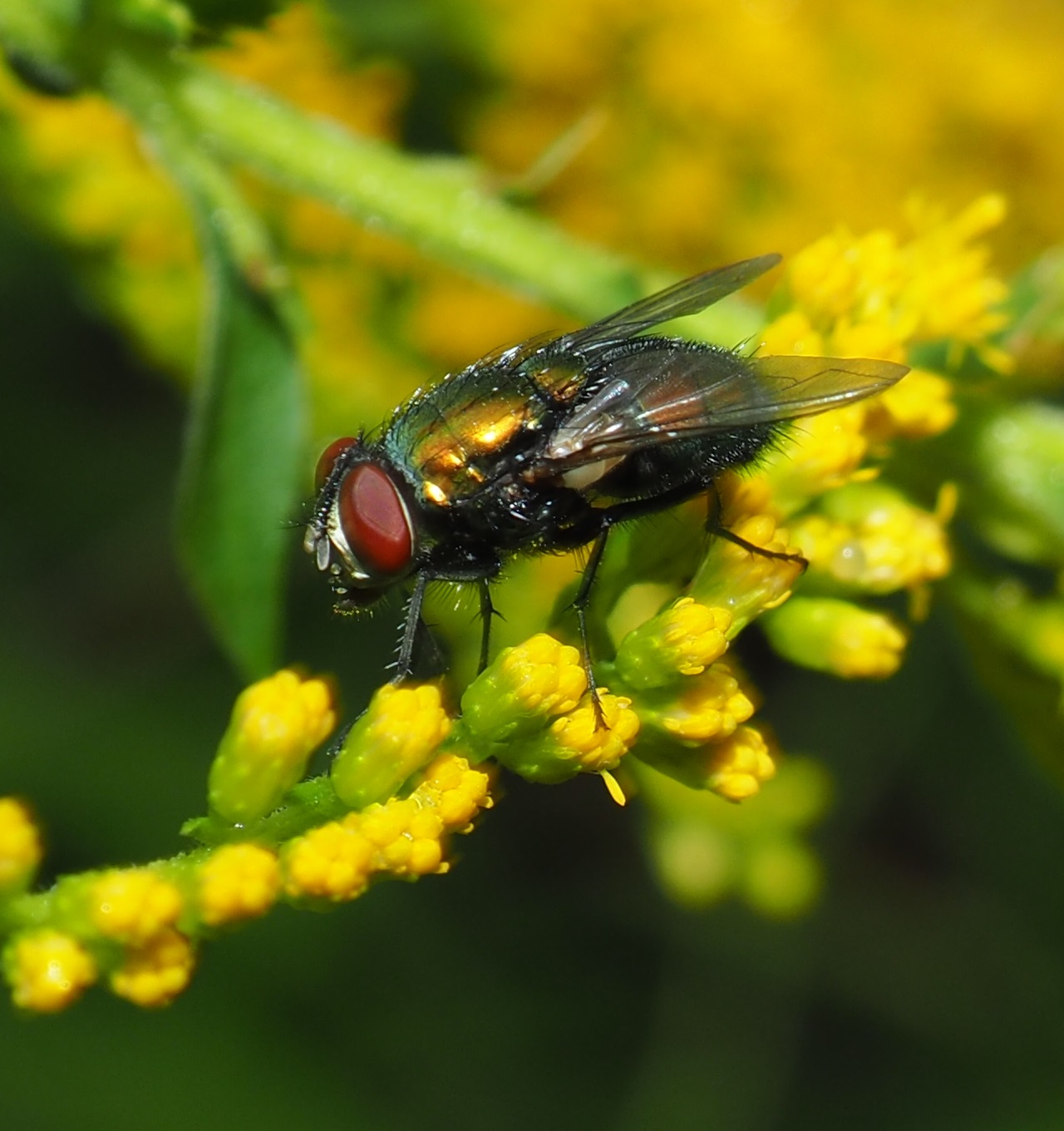
This Green Bottle is hanging upside down and examining the fine work of the workperson that made this fine goldenrod dish. Then a hover fly, Toxomerus geminatus. Then a brown mosquito.
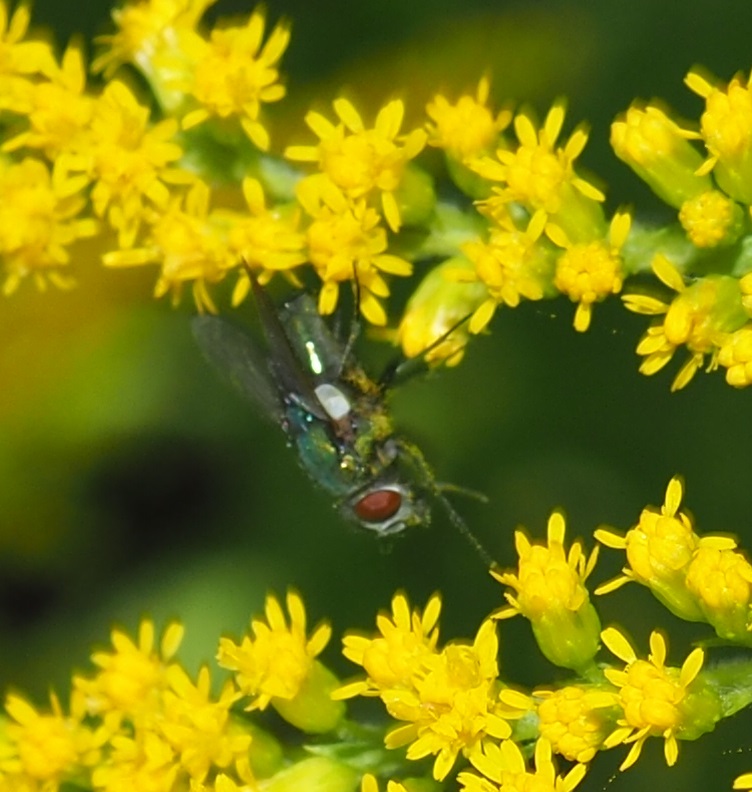
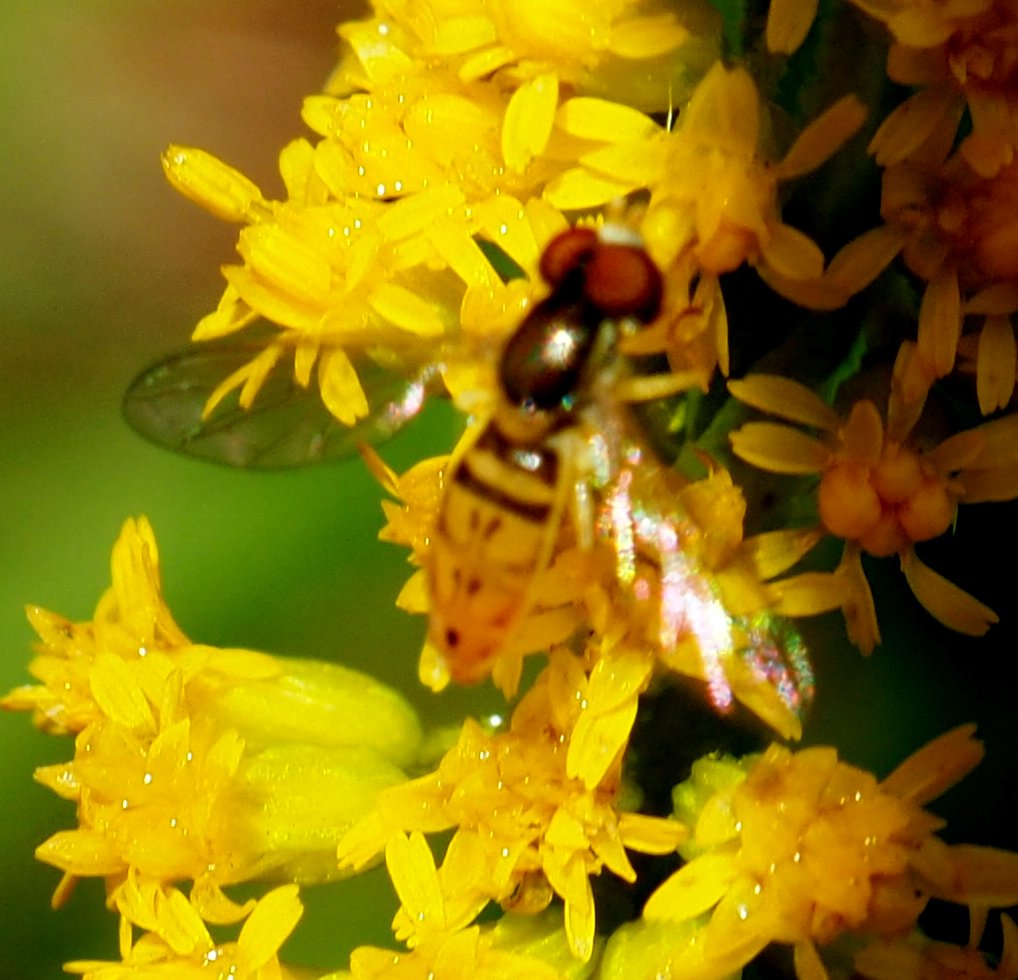

A Moth Fly. Remember "moth" in this phrase is an adjective. Second, a fly that has so much hair and spikes it must be a Tachinid Fly. And third, one of those striking orange flies.
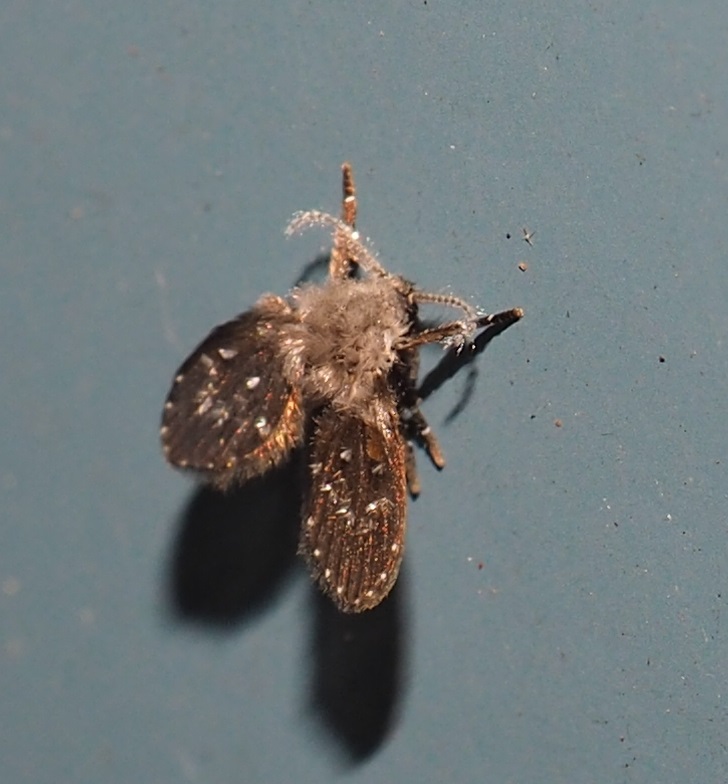
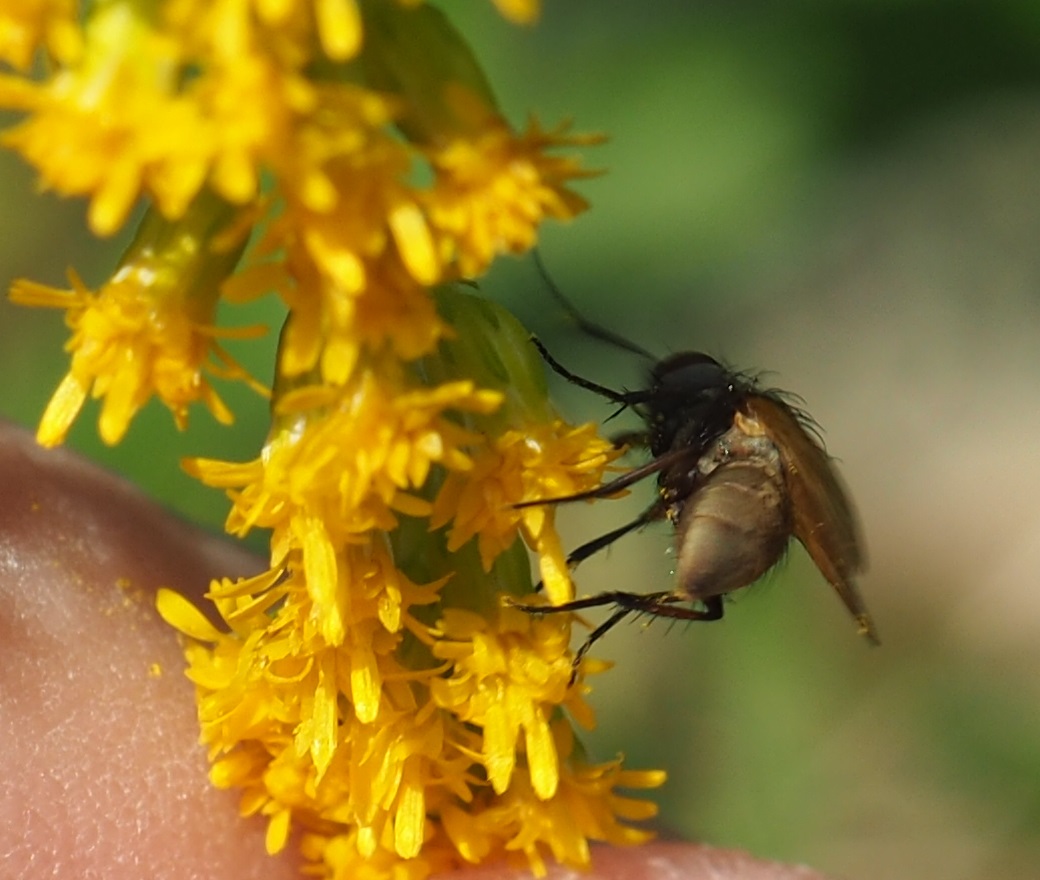
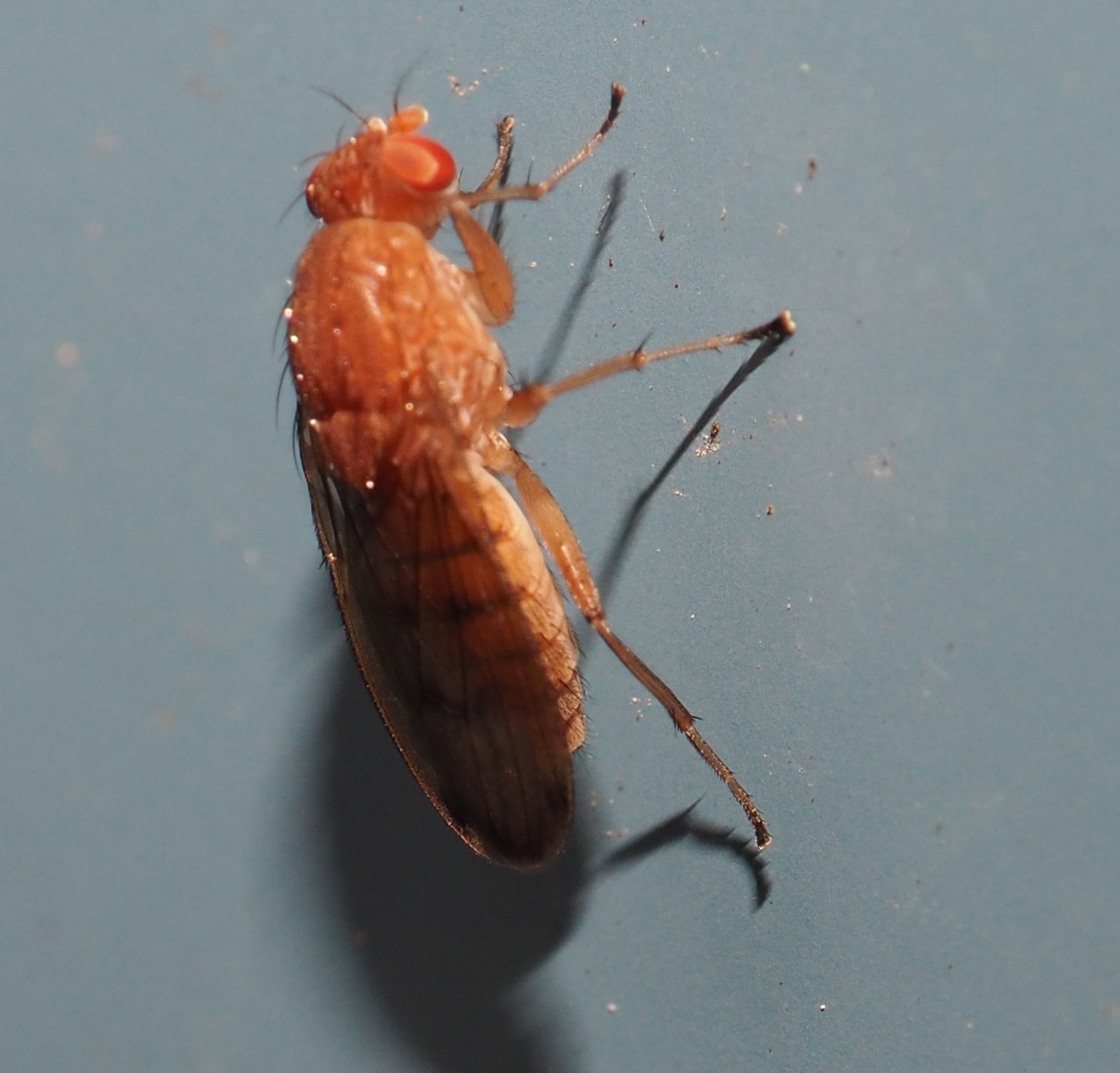
A smaller fly with an orange thorax, lapping up whatever tastes good on that leaf. Next, one of the most common flies these days, the one with the red eyes, pinkish-grey thorax and fat orange abdomen. Third, another tachinid.
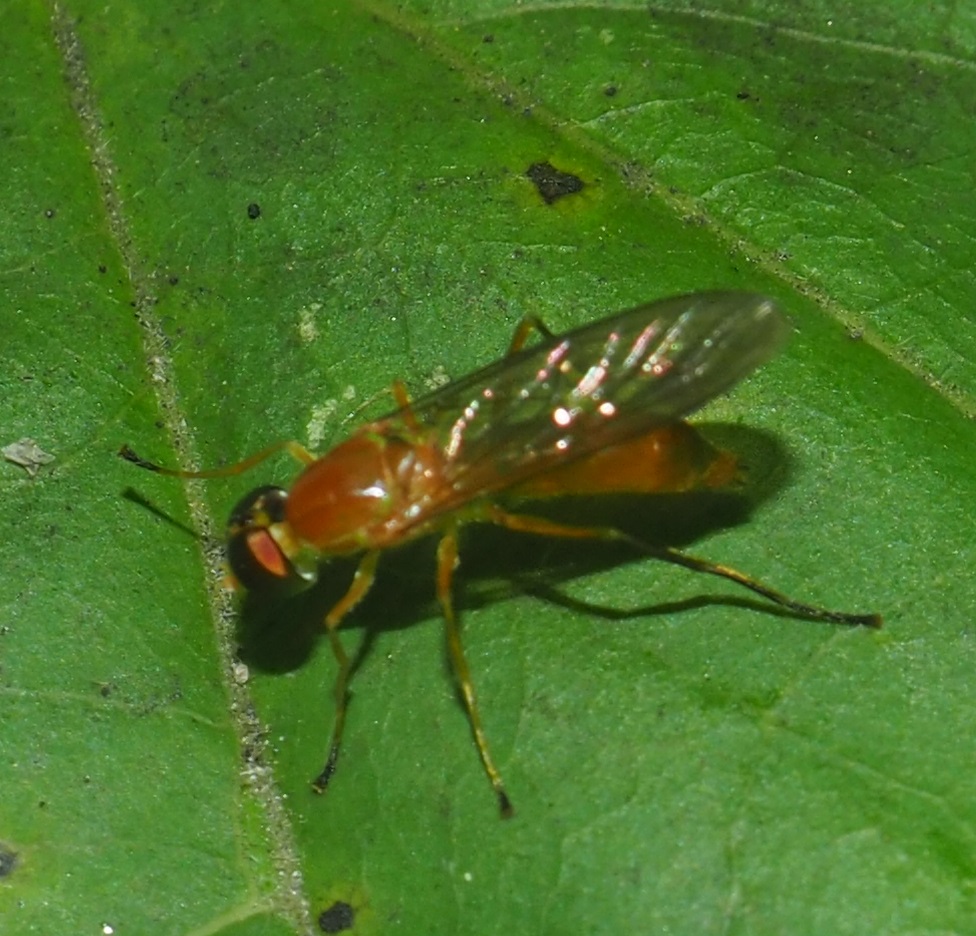
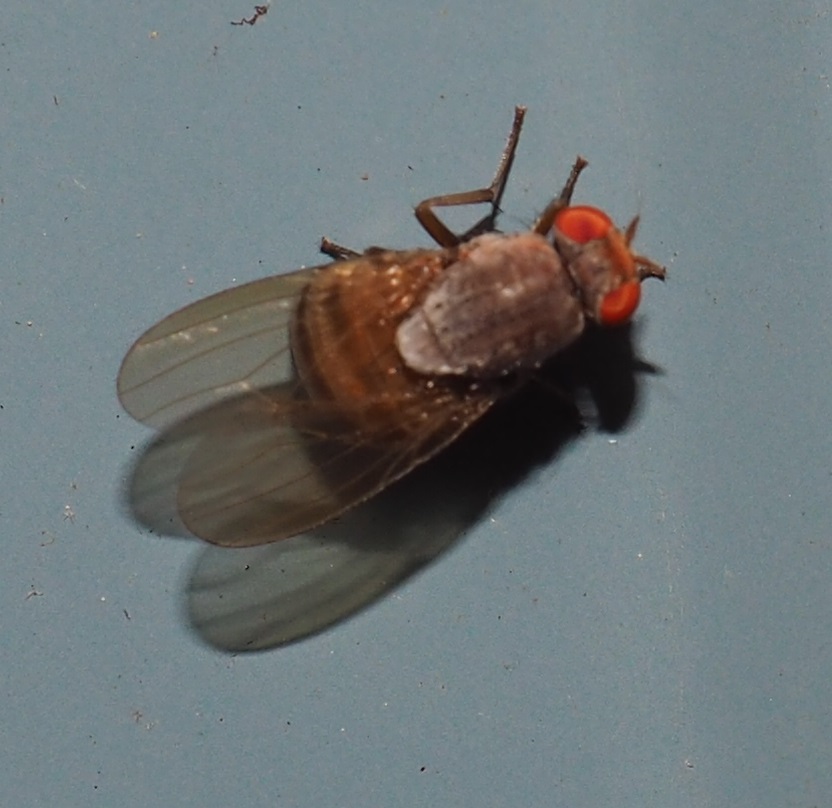
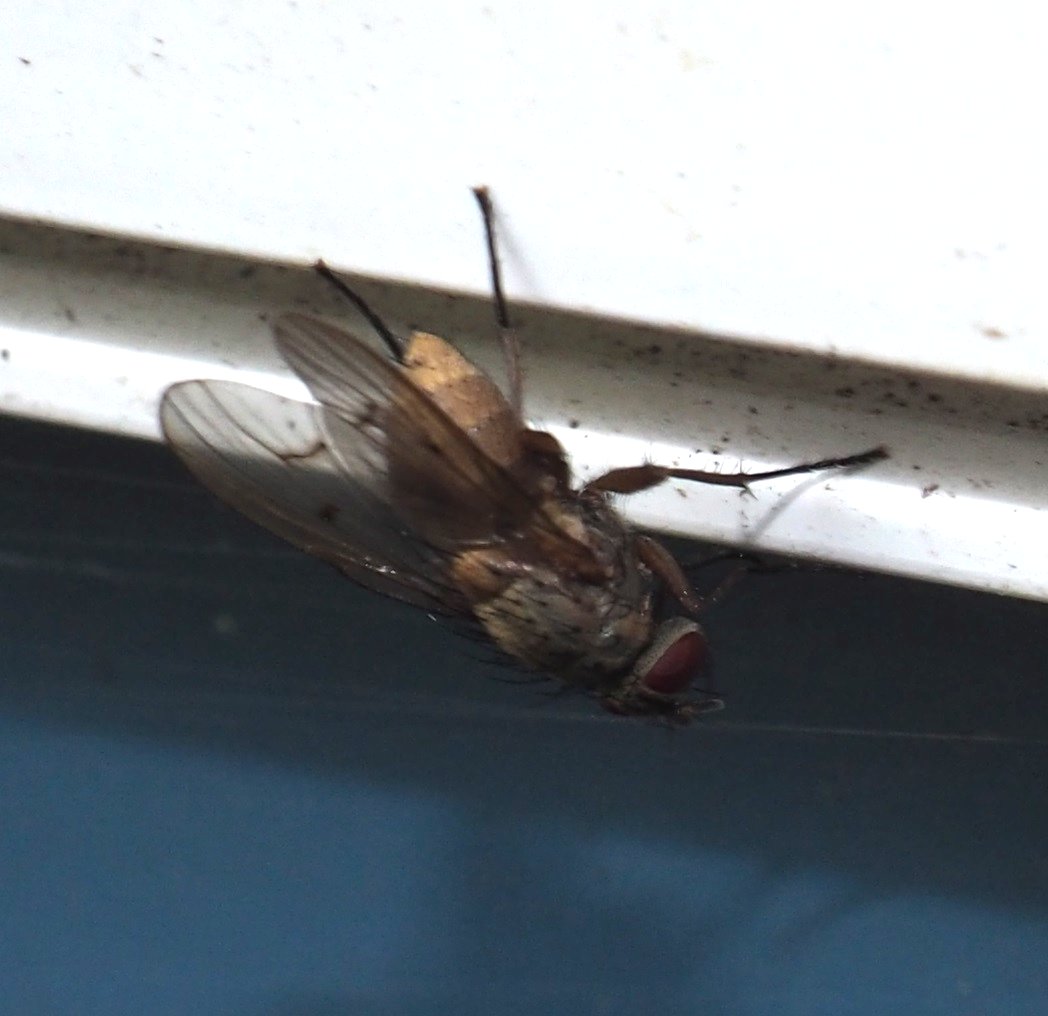
Here is an example (in two images) of a fly mimicking a wasp. Just look at those bulging round fly eyes. Finally, a tiny fly with red eyes, a black round abdomen, and sometimes called a Lance Fly.

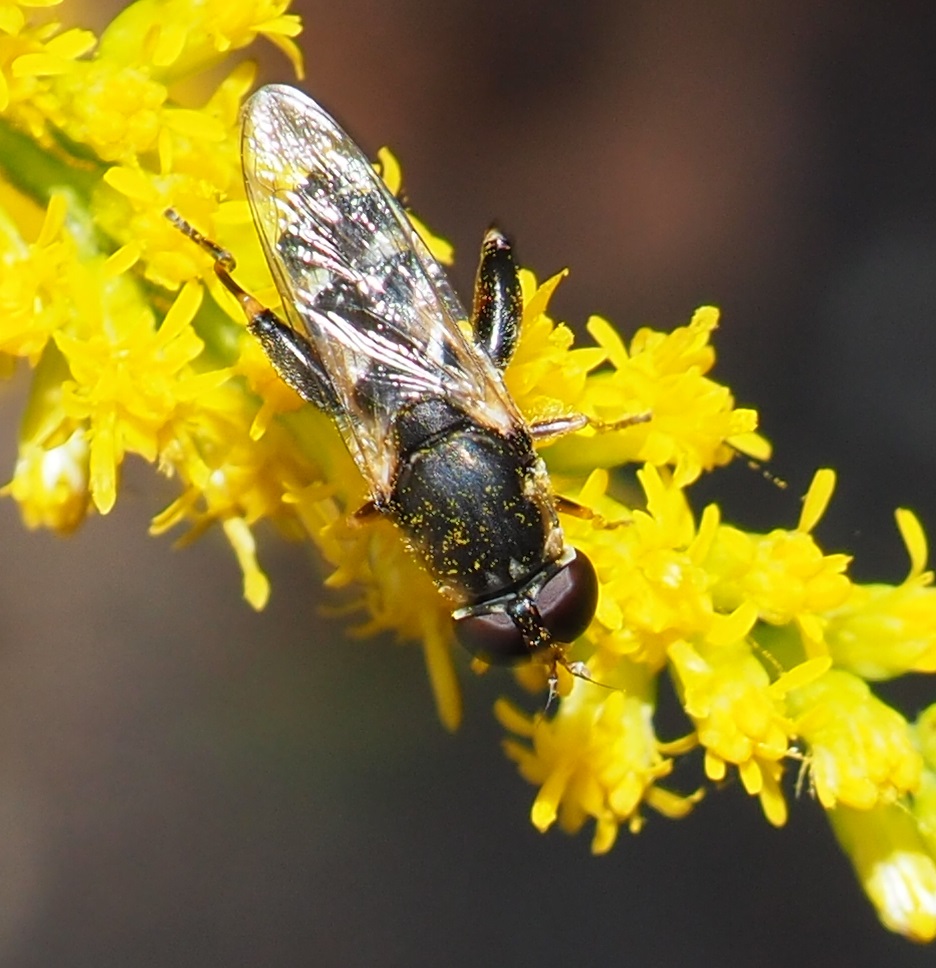
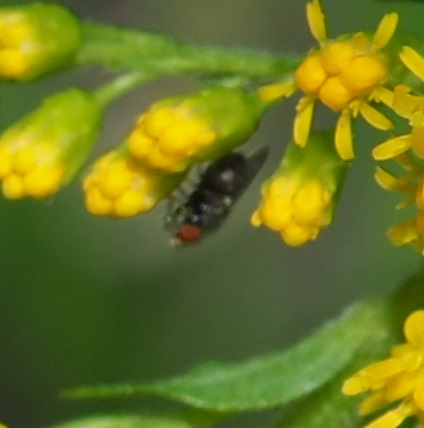
Here are some of the tiny tiny white flies (namely, Whiteflies) we saw in great numbers last week. Then a tiny fly with yellow and black markings on the thorax. Then a moth or fly, almost white on the goldenrod. Then a smallish fly with the attitude of a Robber Fly. Never saw one of those before.
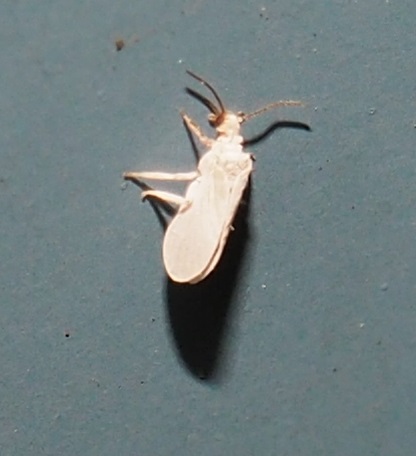
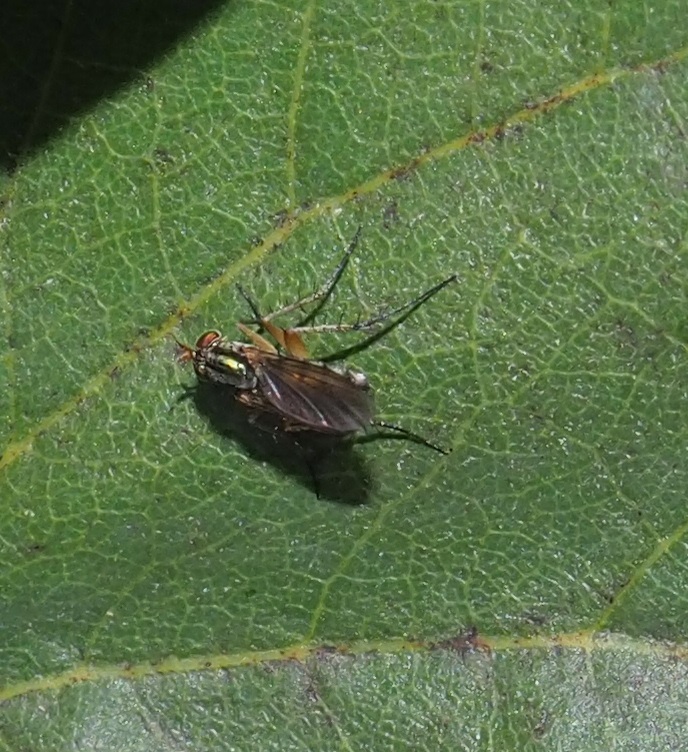
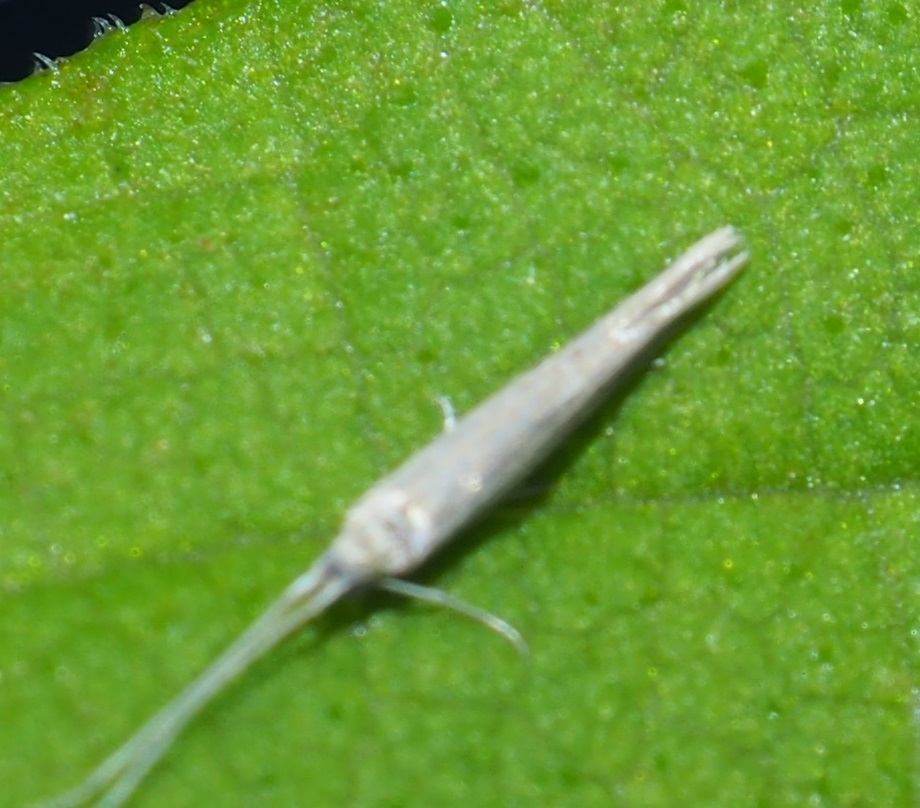

This little green frog appears about half the days on a lily pad. She still hasn't spoken to me. But she does seem interested in the two reddish fish in the water under her. Here too is a picture of one of the yellow-greenish-white water lilies. Finally, here is also another picture of the pond. I did NOT design the upside-down lily reflection. But my old friend Serendipity did the design of the pond as a whole. Thanks to her.
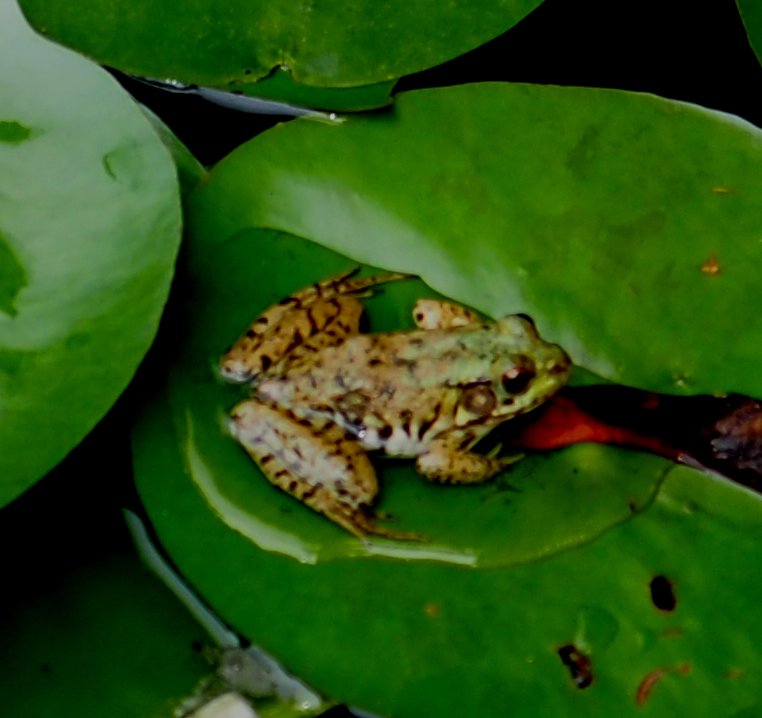
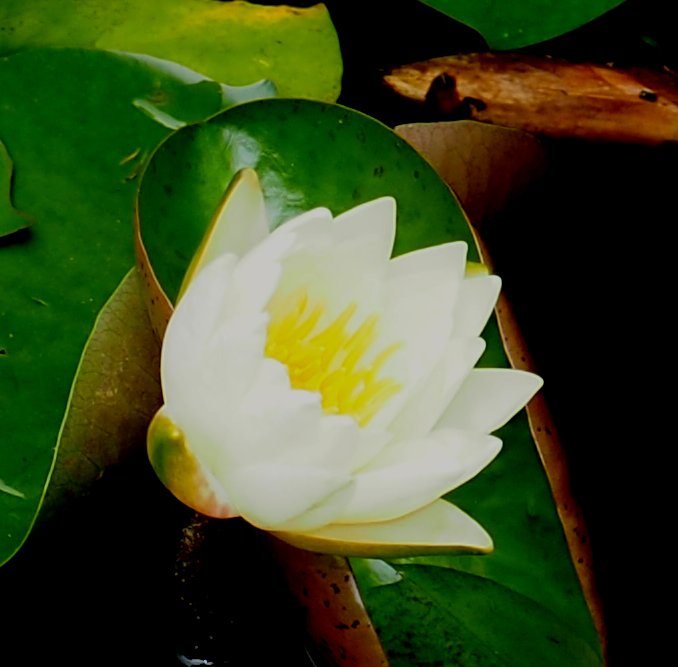
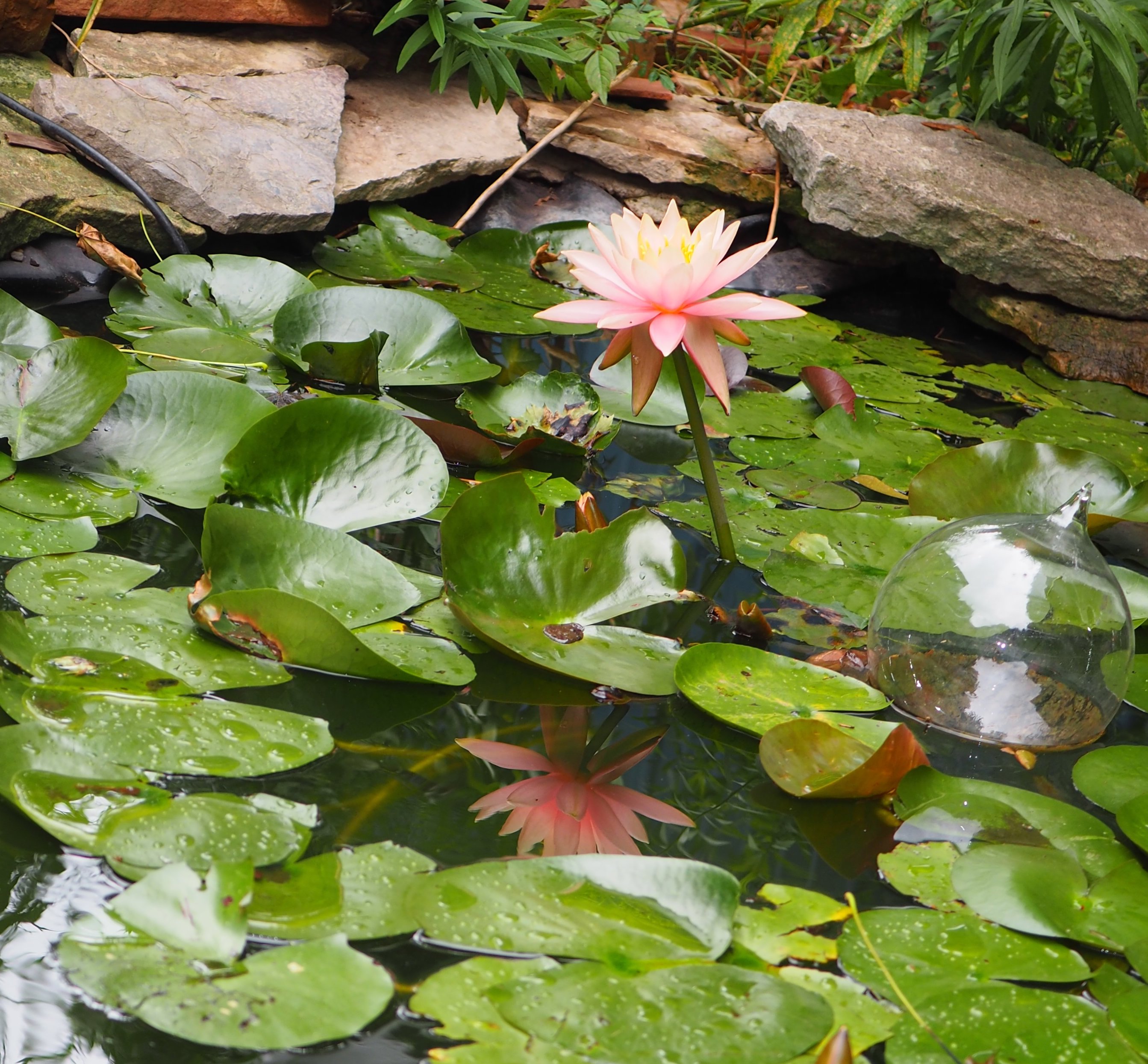
We saw this lovely little snail climbing up on the house clapboards. Here is a new spider - seen from the ventral view. Then a bunch of baby spiders coming out of some sort of protective housing. And last, a Common House Spider with prey. This is pretty much it as far as spiders go. I was eager to grab as much time as possible going on to the wasps and bees and other things that congregate in the goldenrod.

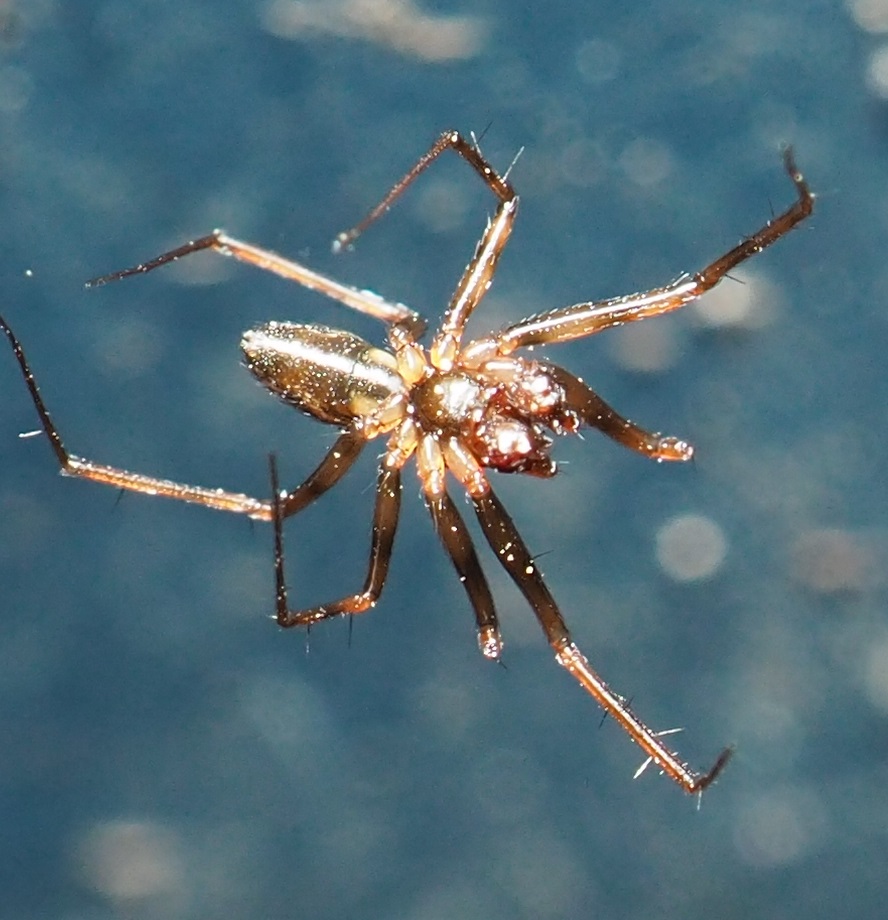

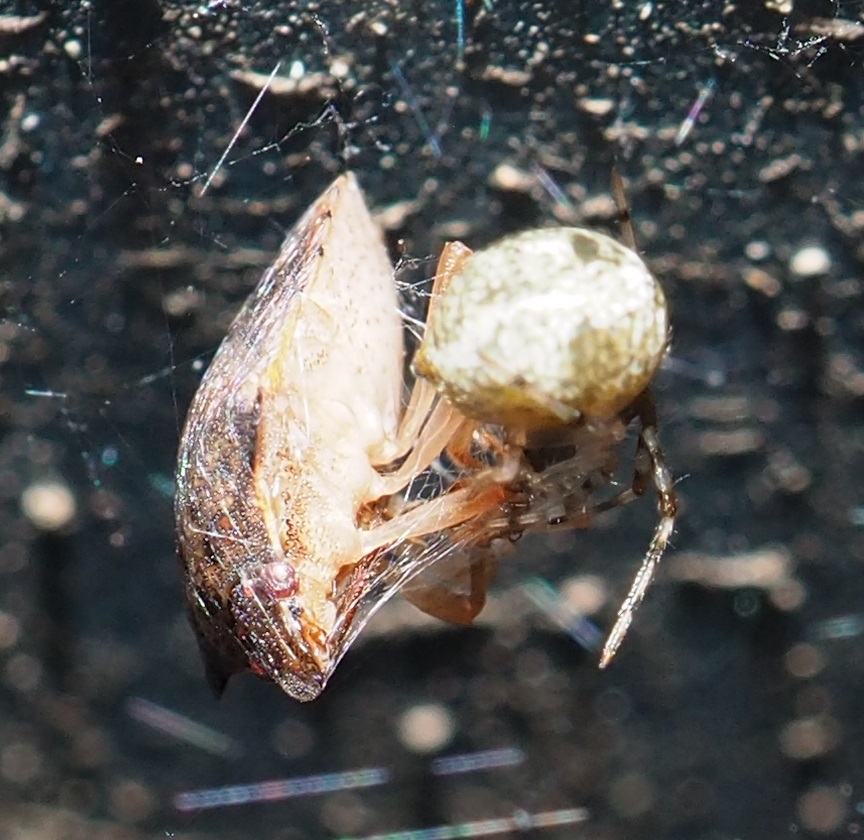
Here are some wasps that were out on August 28, about noon. This first one looks to me like Ancistrocerus adiabatus. Can you see the little happy face on the back of the wasp? Since the picture is close to a lateral view, the happy face is toward the pictured wasp's bottom. Since the happy face is complete, i would say this is a female. The second has vertical "eyebrows" and so I would say it is in the genus Cerceris. I think I have a collection of Cerceres: clypeata, insolita, and maybe others.
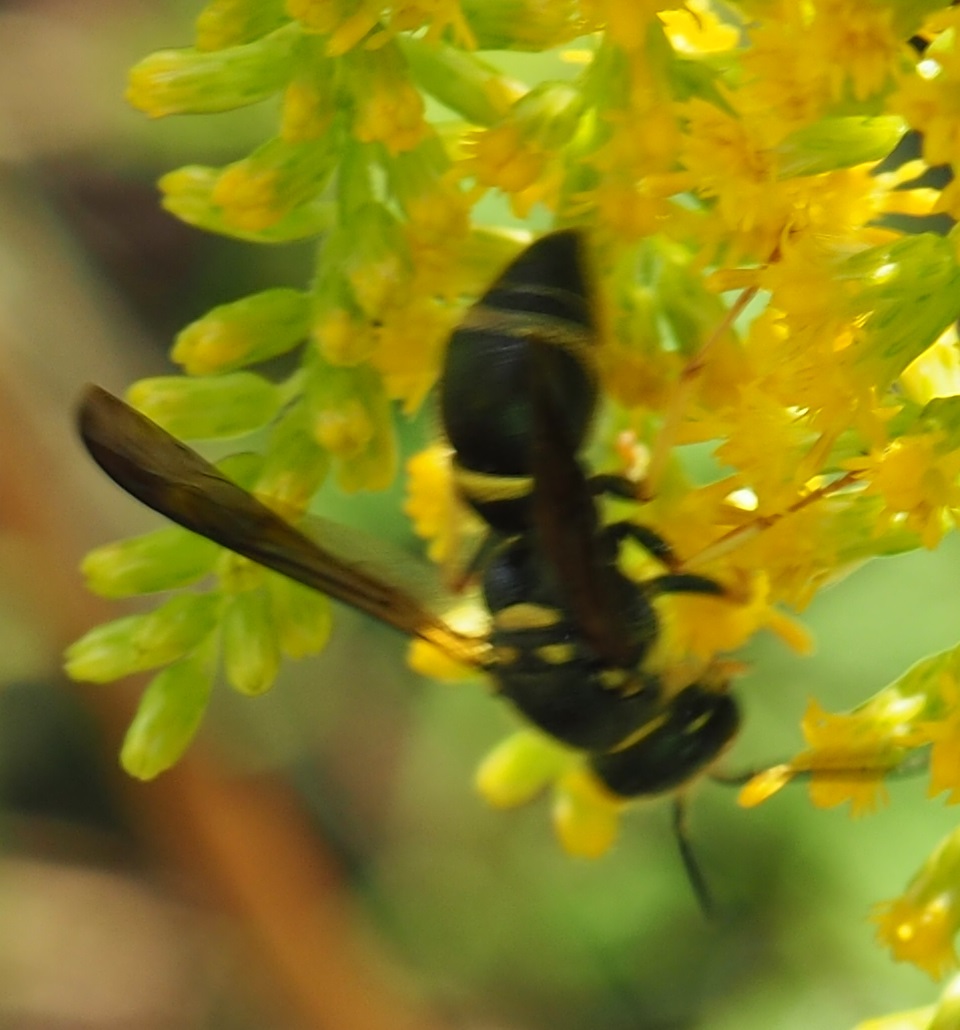

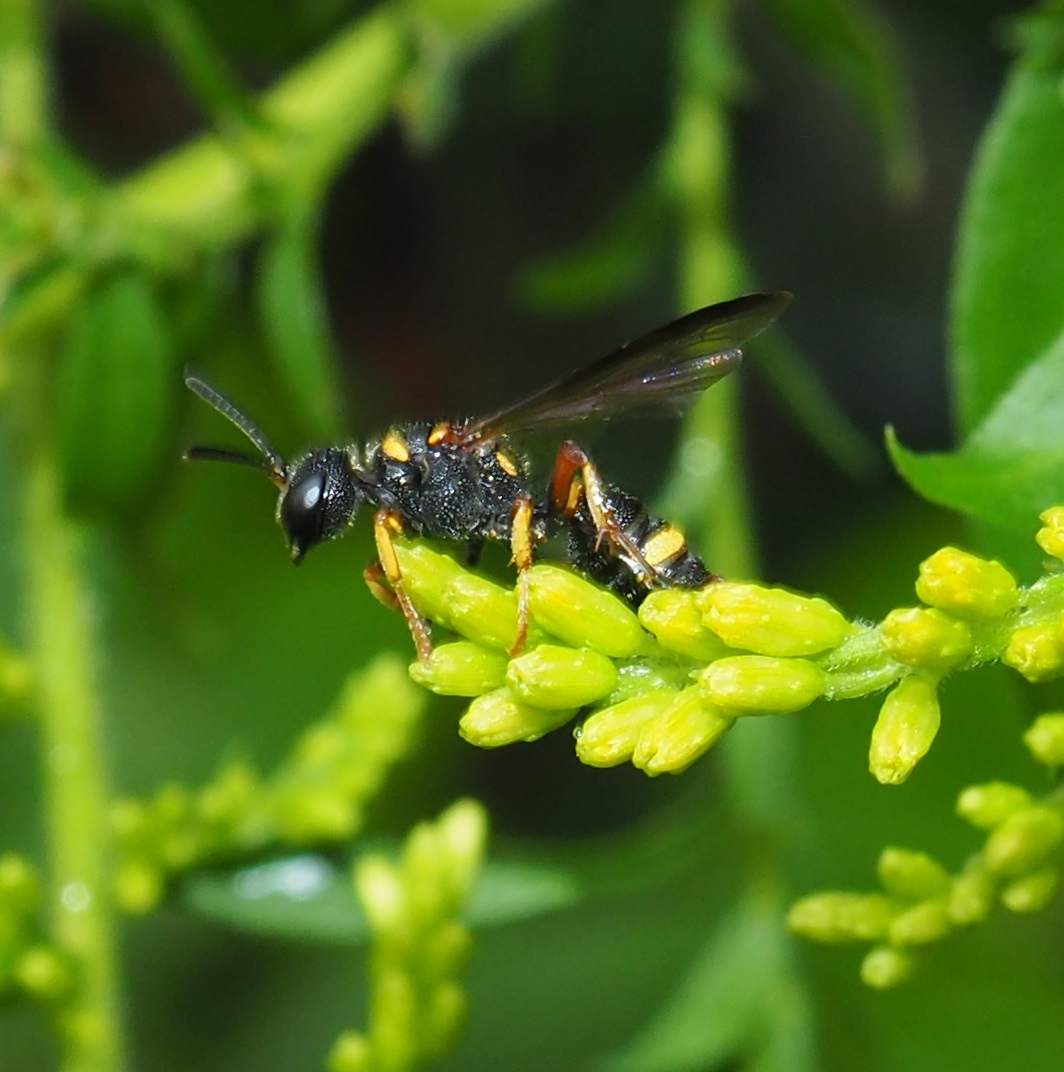
More wasps. This fuzzy one has such an intelligent face- much like a mantid's. Look at the tongue in the second frame. Images 3 and 4 show that the Fuzzy One is also a thread-waisted wasp.

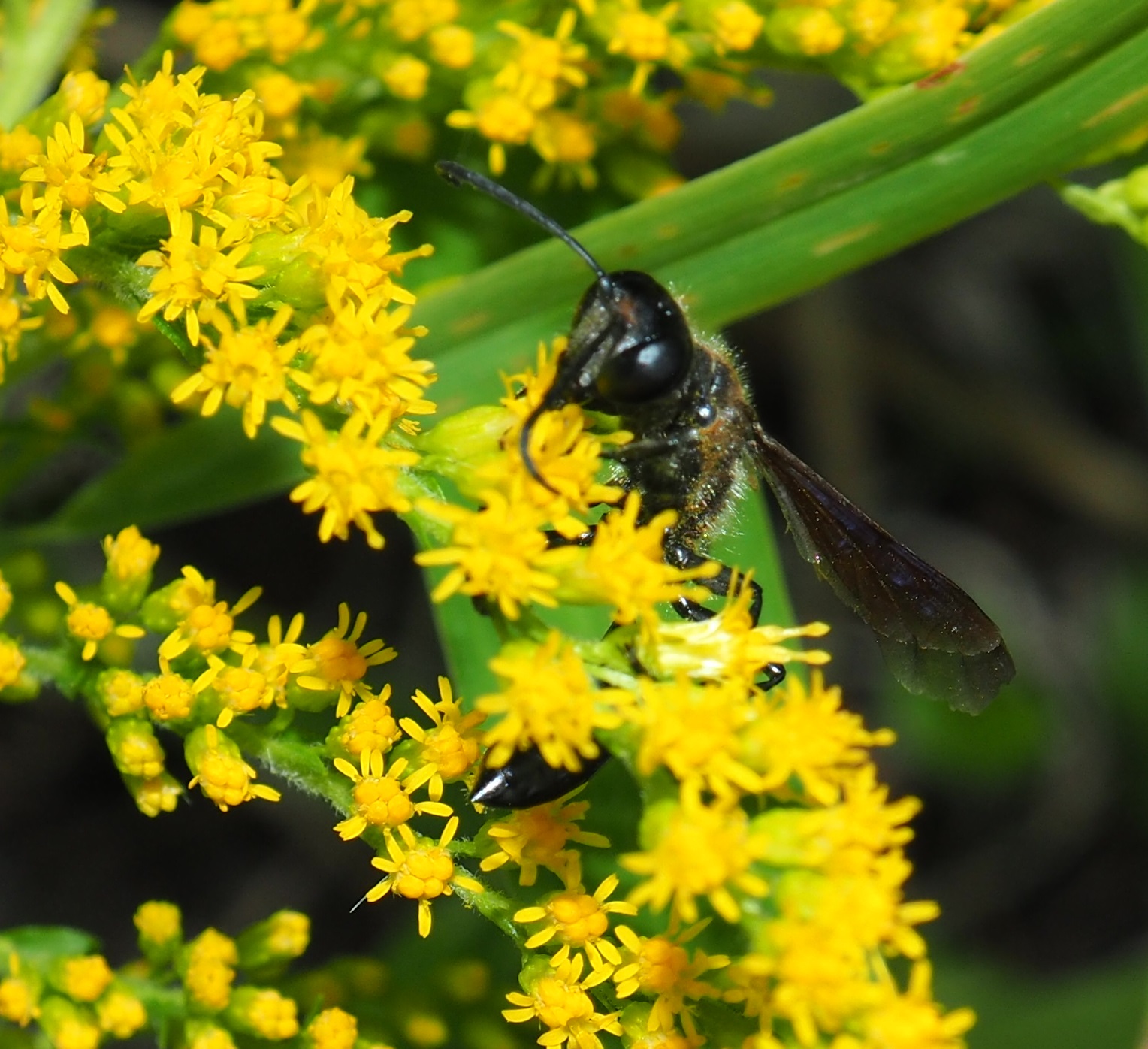
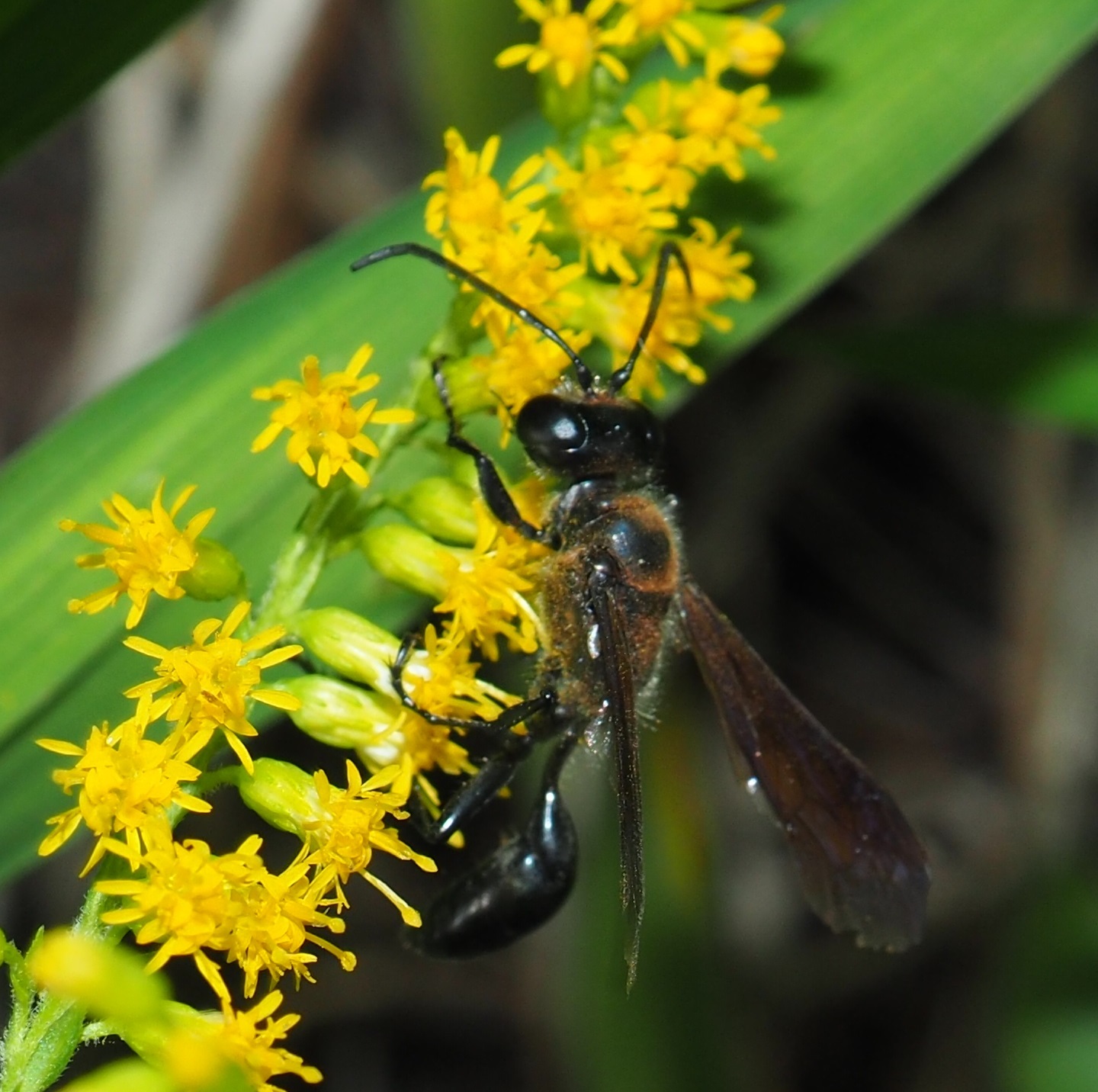
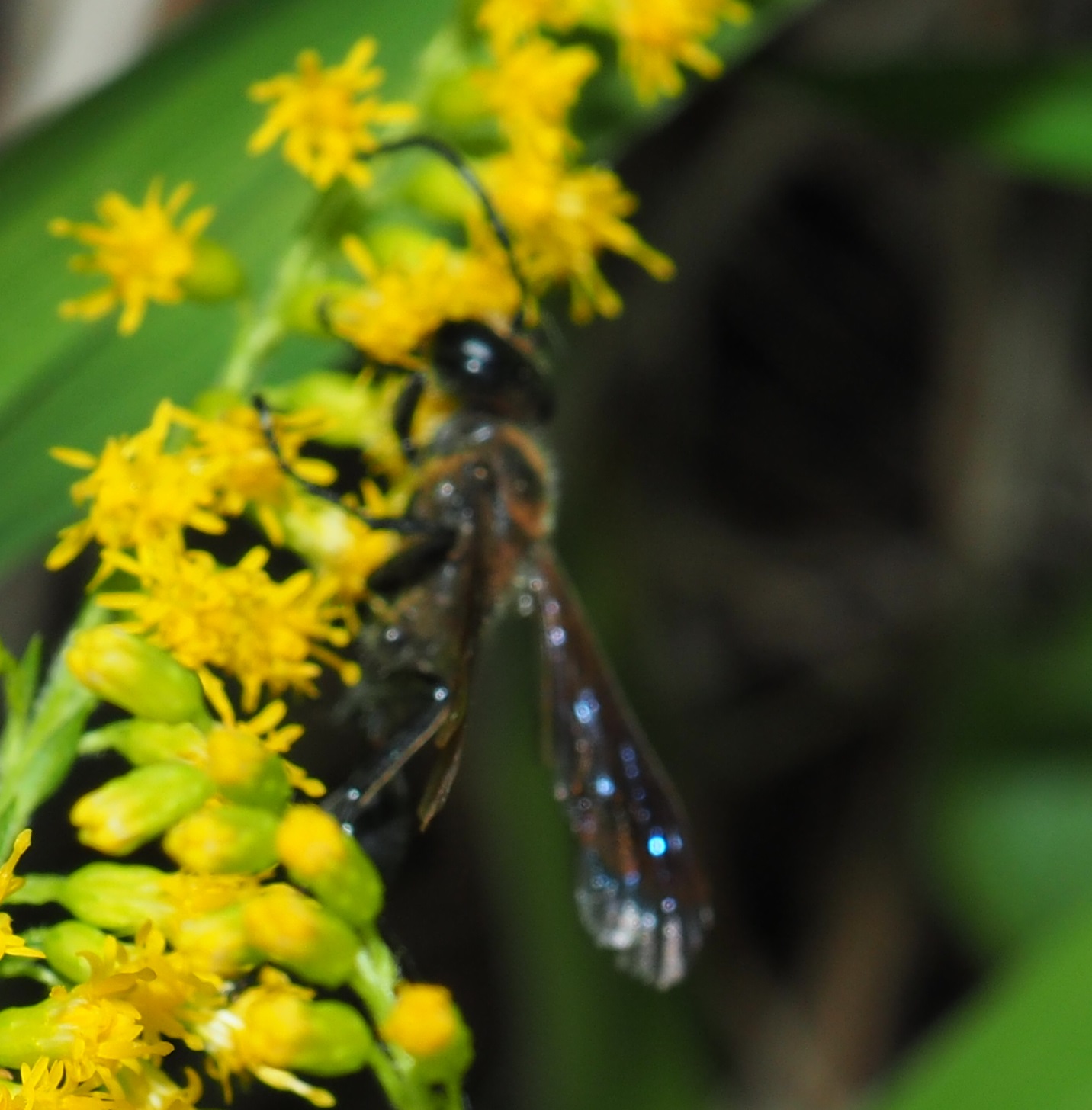
More thread-waisted wasps. The pink and black-tailed one is a new one to me. There is a Great Golden Digger Wasp but this is not it. It prefers milkweed gardens. We saw this Eumenes fraternus last week, and I saw them this week too, but must have thought they were covered so this is last week's image.
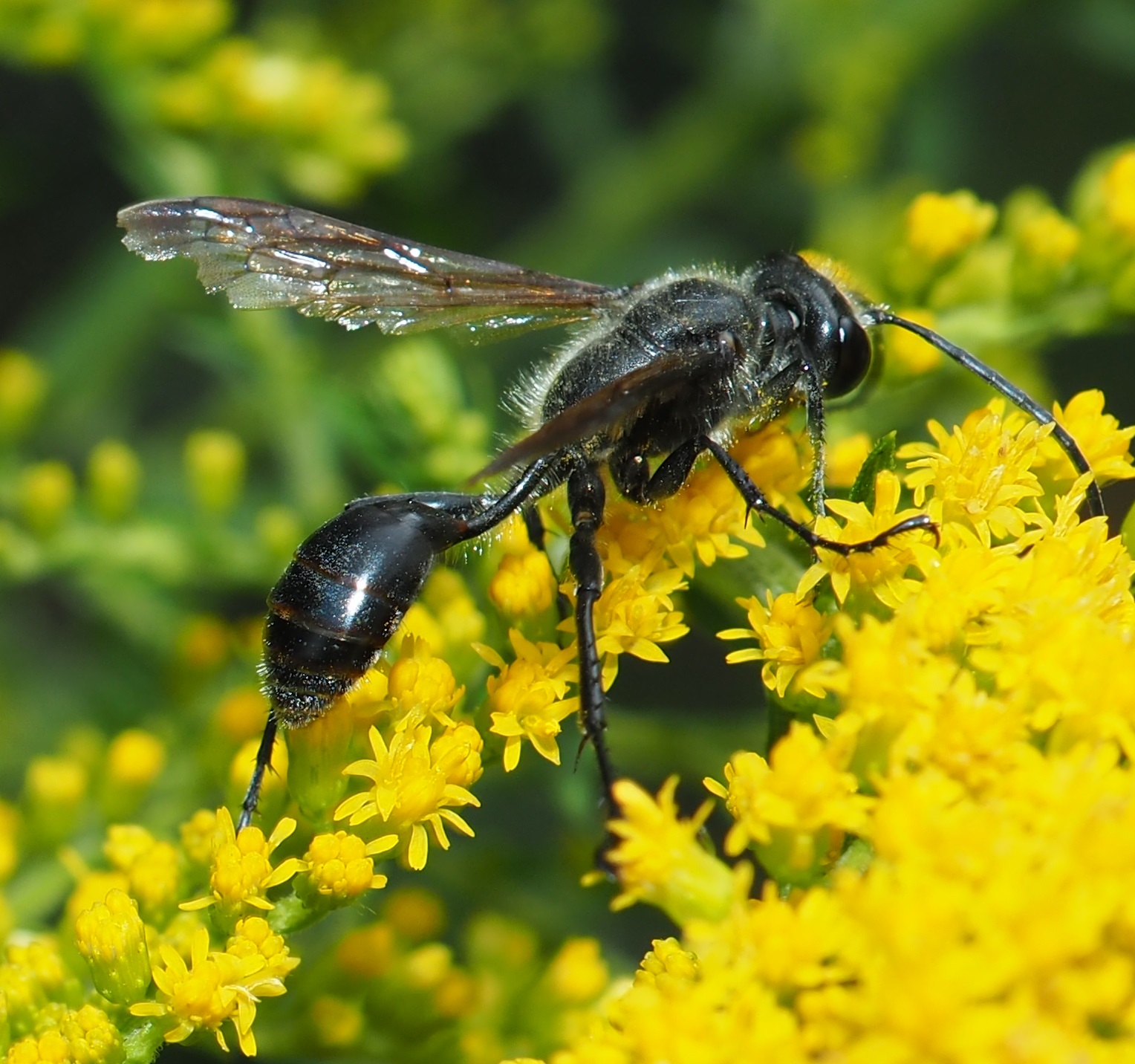
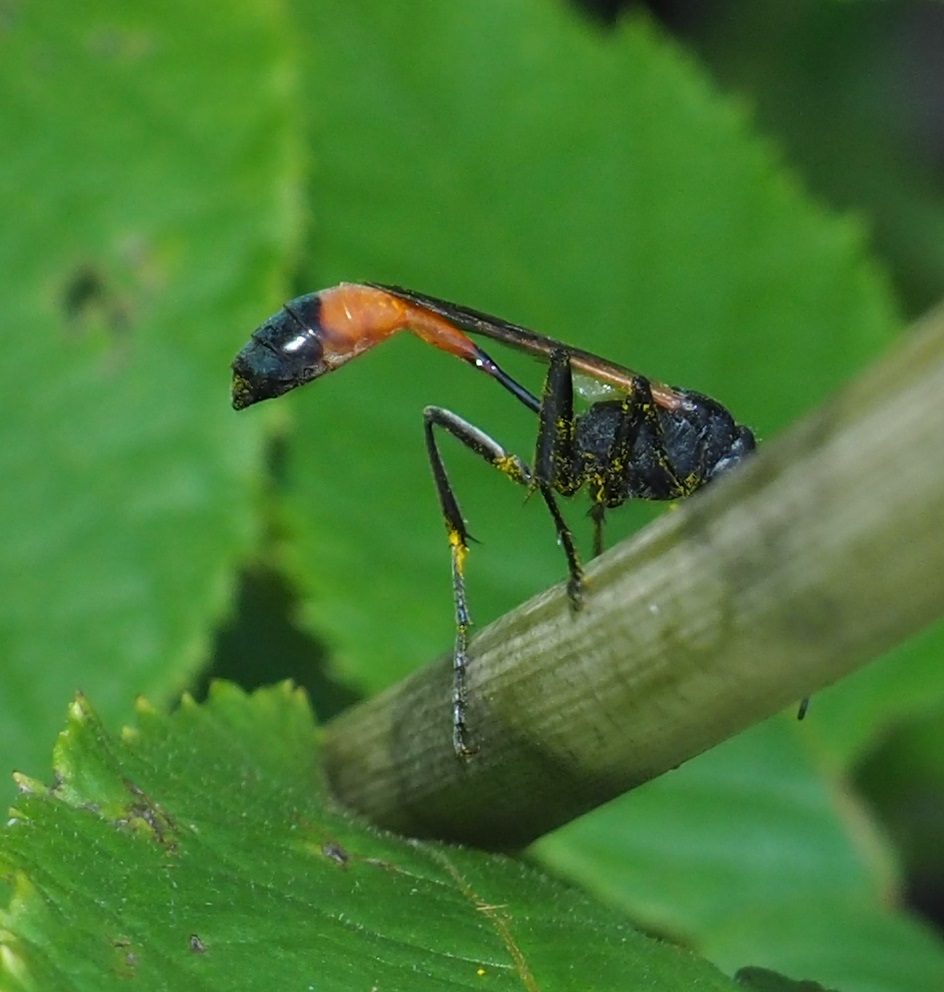
 blooming goldenrod 8 21 18 1.jpg)
The paper wasps are my very favorite. The european paper wasps (Polistes dominula) are always yellow on black. This one seems to have only 6 abdominal segments, so is a female. (Males have 7). Second is a female Northern Paper Wasp. If she were male she would have a shield-shaped ornament on her face (I love gender-ambiguous language), as in picture 3. These northern or dark paper wasps also seem to have different faces from one another and can recognize one from the other.

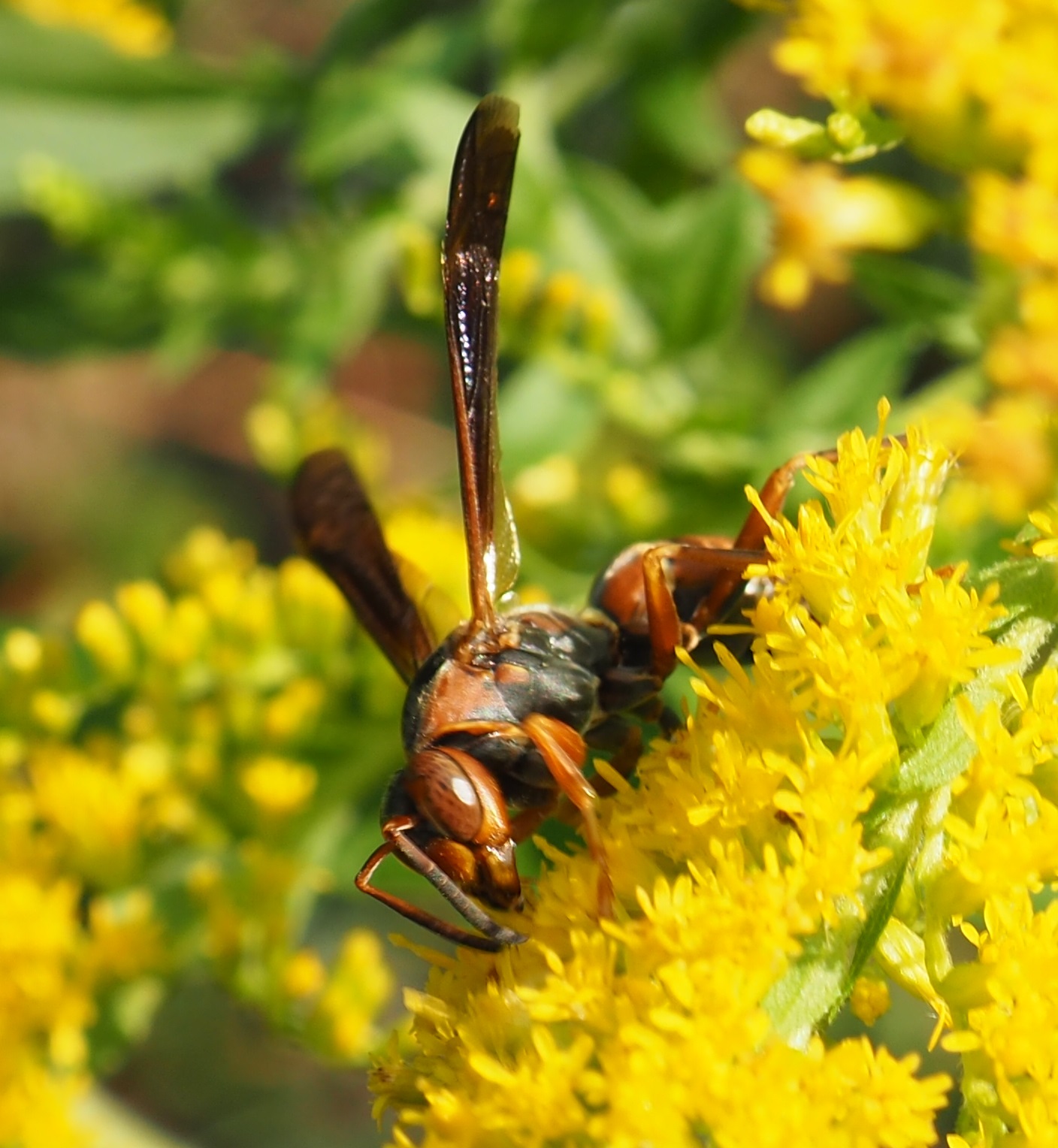

That is a lot of wasps to swallow at once, so I have been storing up some of the pretty flower pictures for the end. A little cascade of phlox; The petunia collection. And the untwirling aster flower.
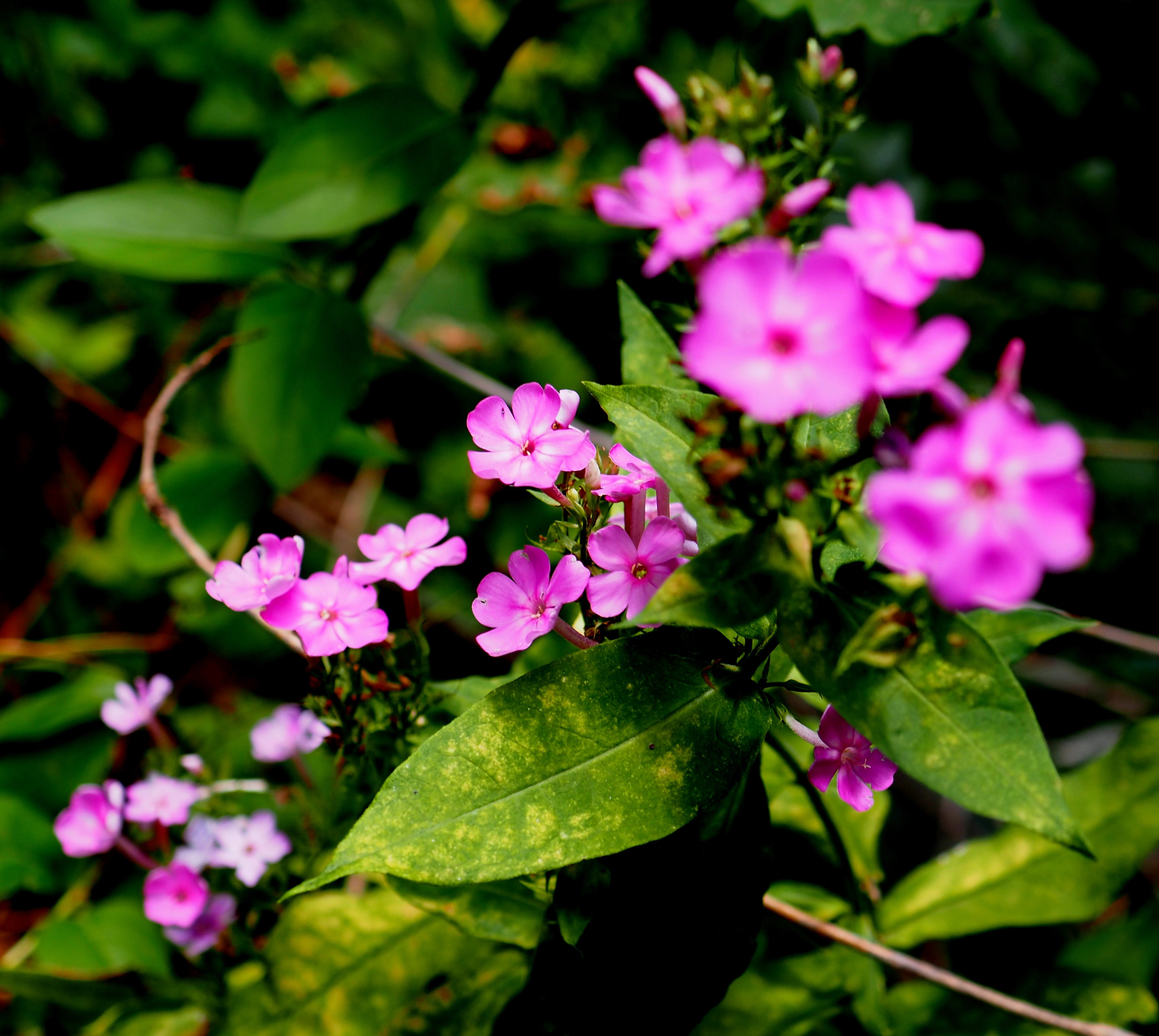
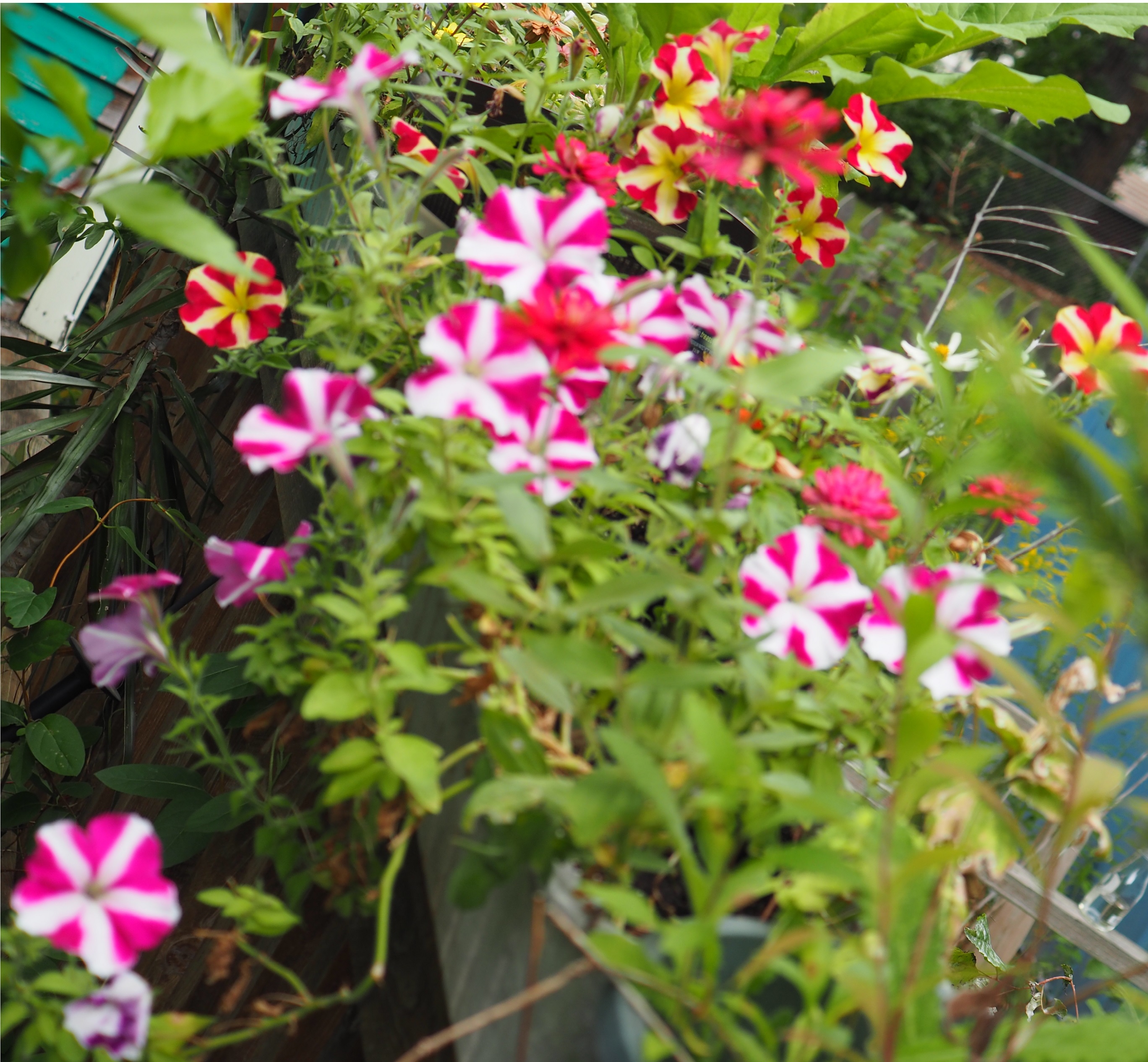

There is one more pond picture. This time (again!) there were four huge pink water lilies. I have been meaning to tell you that that glass globe was rescued from a Chemistry Department cleanup by Dan Steffenson, who left us this year.
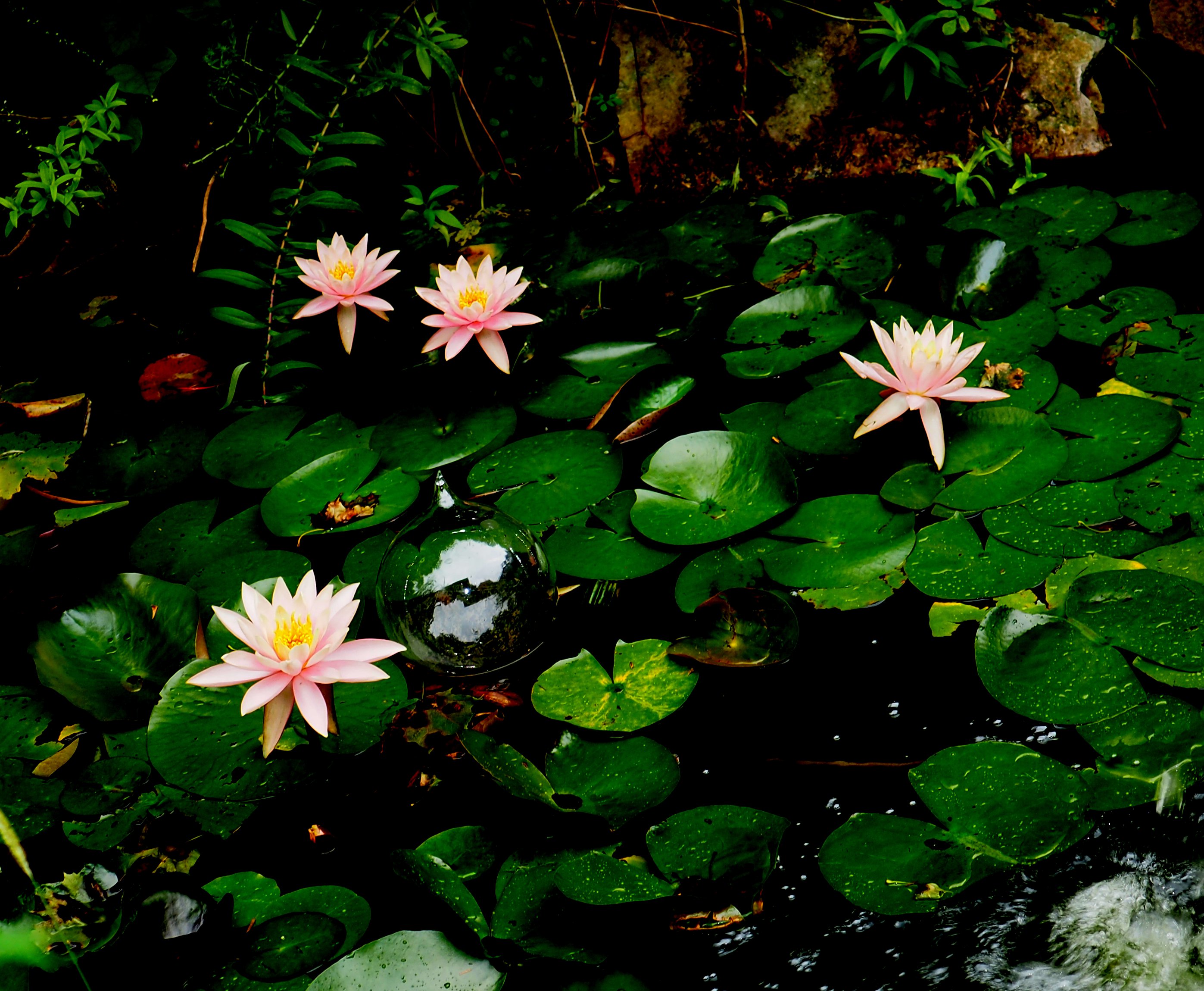
So how is everyone? Stay that way if you said great, and otherwise get great!
Love to everyone,
Martha
Back to August 26, 2018
Forward to September 9, 2018
Back to main menu
copyright Martha O'Kennon 2018








































 8 29 18 1.jpg)














































 blooming goldenrod 8 21 18 1.jpg)






